We had planned to sail from Lagos to Tangier. However, the weather conditions were not ideal for crossing the straits and our boat needed some repairs to our AIS system. We did not want to miss out on visiting northern Morocco, and so we decided to travel by land instead. A bus took us to Seville where we changed to another bus for Tarifa at the southern tip of Spain. After an overnight stay in Tarifa, we took the morning ferry to Tangier. I am always surprised as to how easy it is to travel across countries in the EU.
Tangier is a modern Moroccan city with a vibrant old medina. We spent time in both the old and new parts of town. The curious Phoenician tombs on the top of the hill offered panoramic views of the Gibraltar Straits. Nearby Cafe Hafa is an iconic restaurant. We sat on the terrace with a glass of mint tea. Ahead in the distance across the straits were the coastlines of Portugal, Spain and Gibraltar.
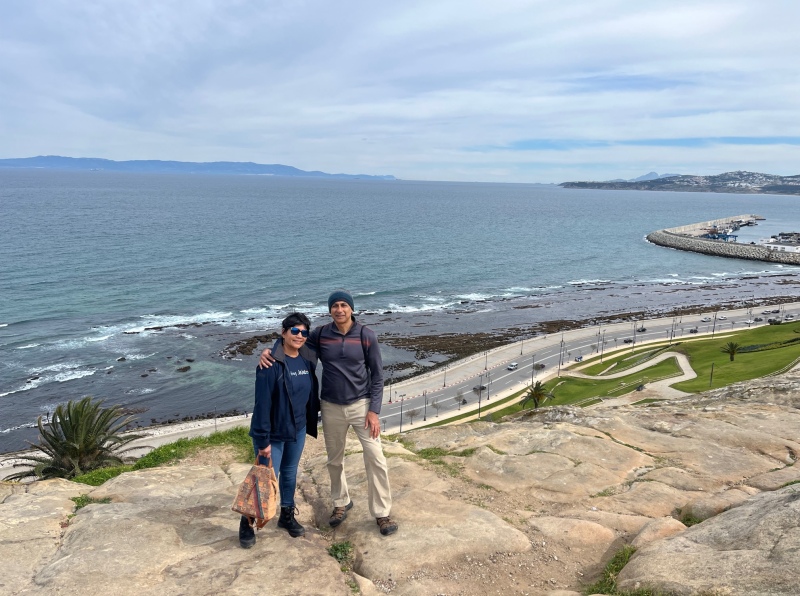
From Tangier, one can see Portugal, Spain and Gibraltar.
The Gibraltar Straits are in the distance
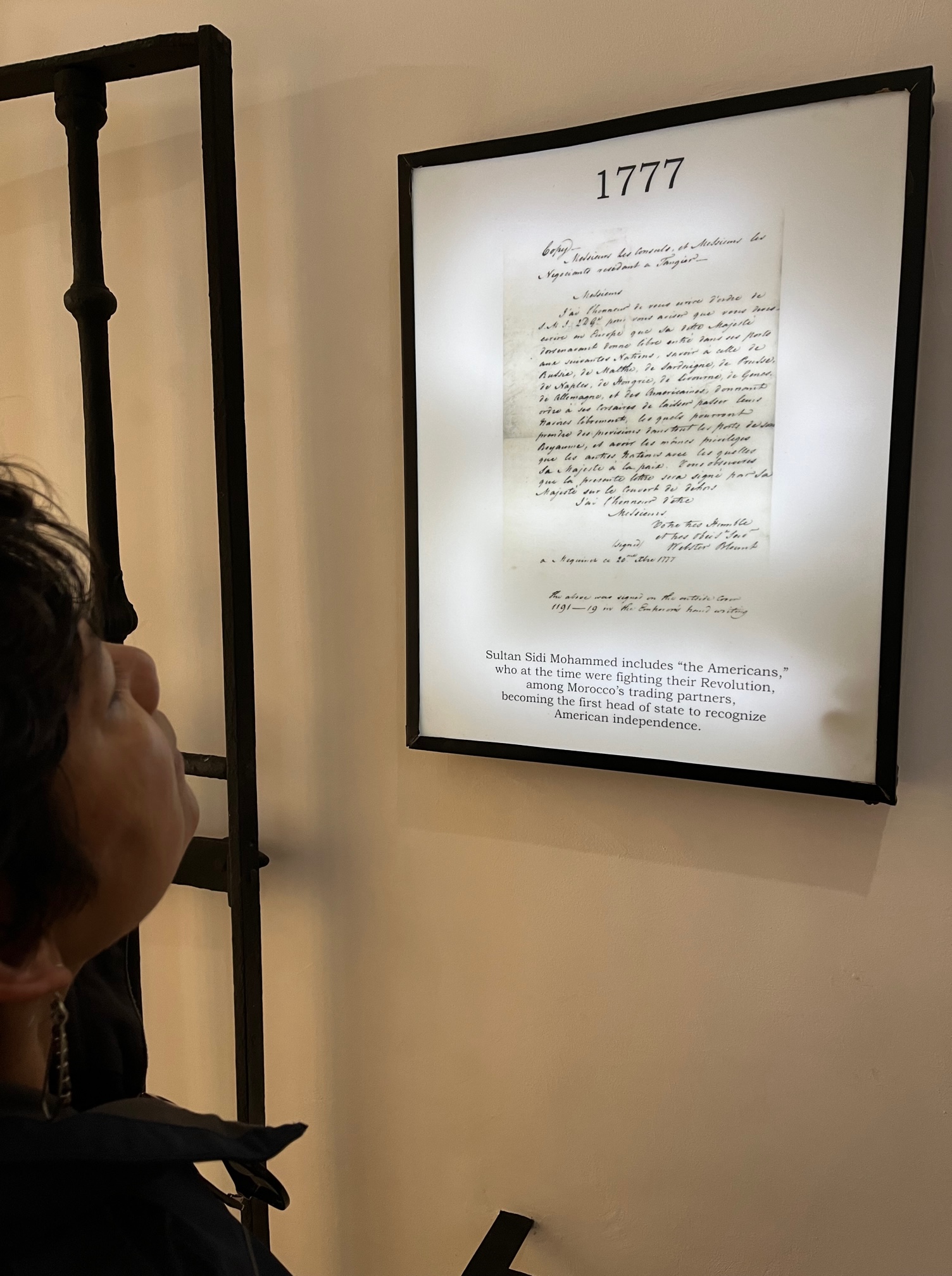
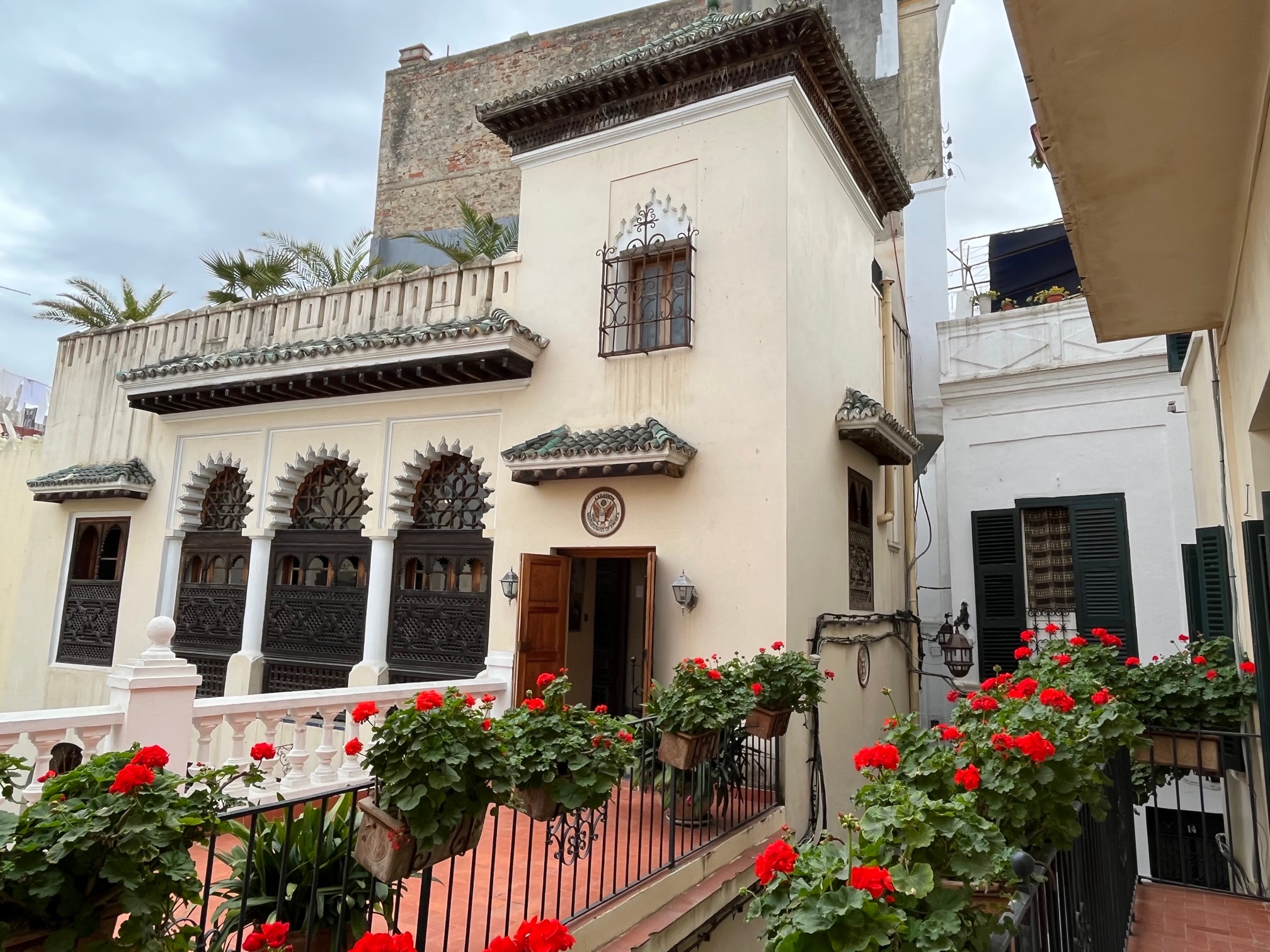
Tangier American Legation Museum
I was unaware that Morocco was the first country to recognize America as an independent nation, on Dec 20, 1777. This was while we were still fighting our revolution. This museum is housed in the first American public property abroad and is the only U.S. National Historic Landmark located in a foreign country. The property was gifted by Sultan Mohammed ben Abdallah to the new nation and it served as the American mission for about 140 years. The museum exhibits trace the close relationship between the US and Morocco from those early days to present times and through the world wars.
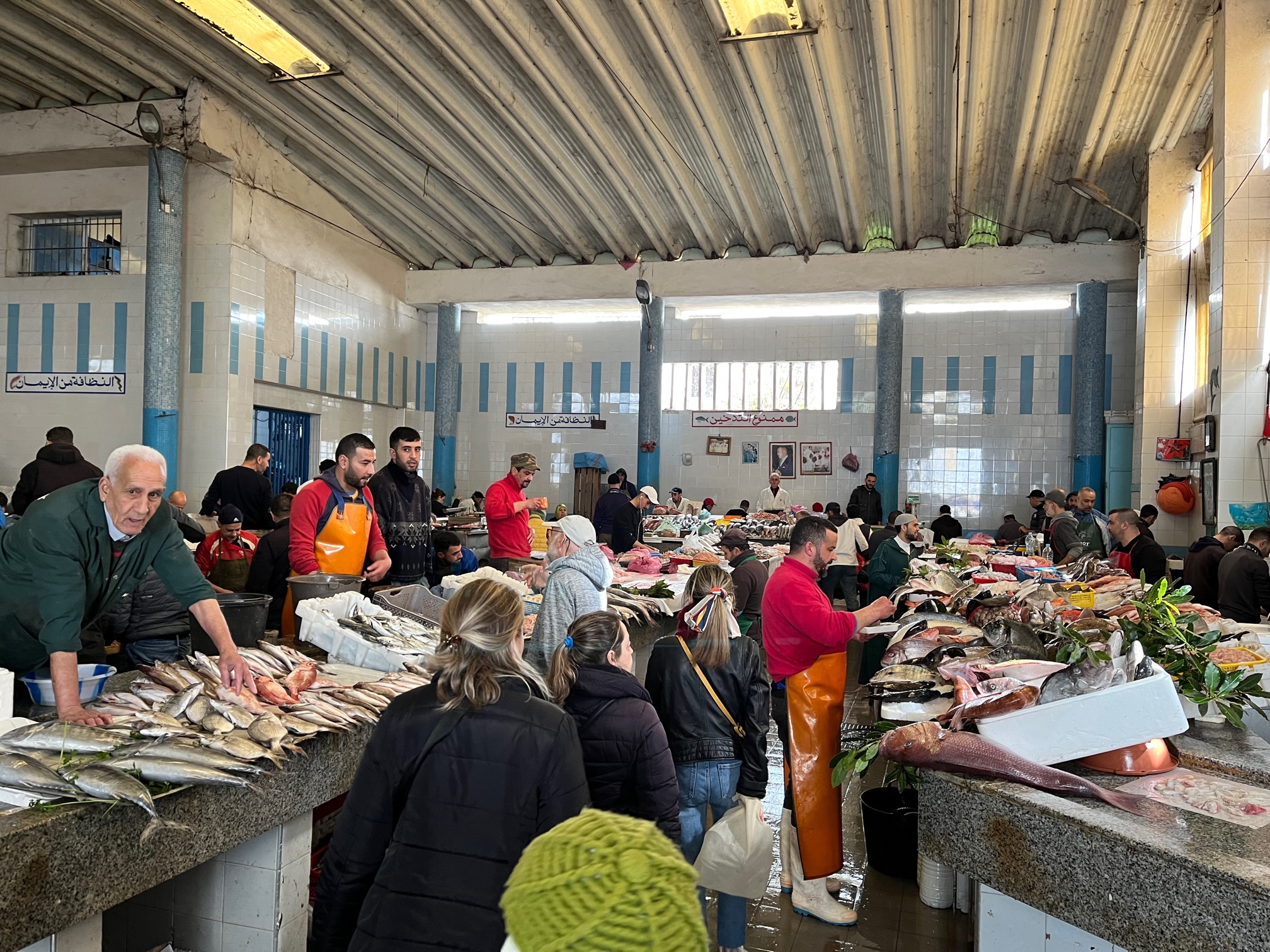
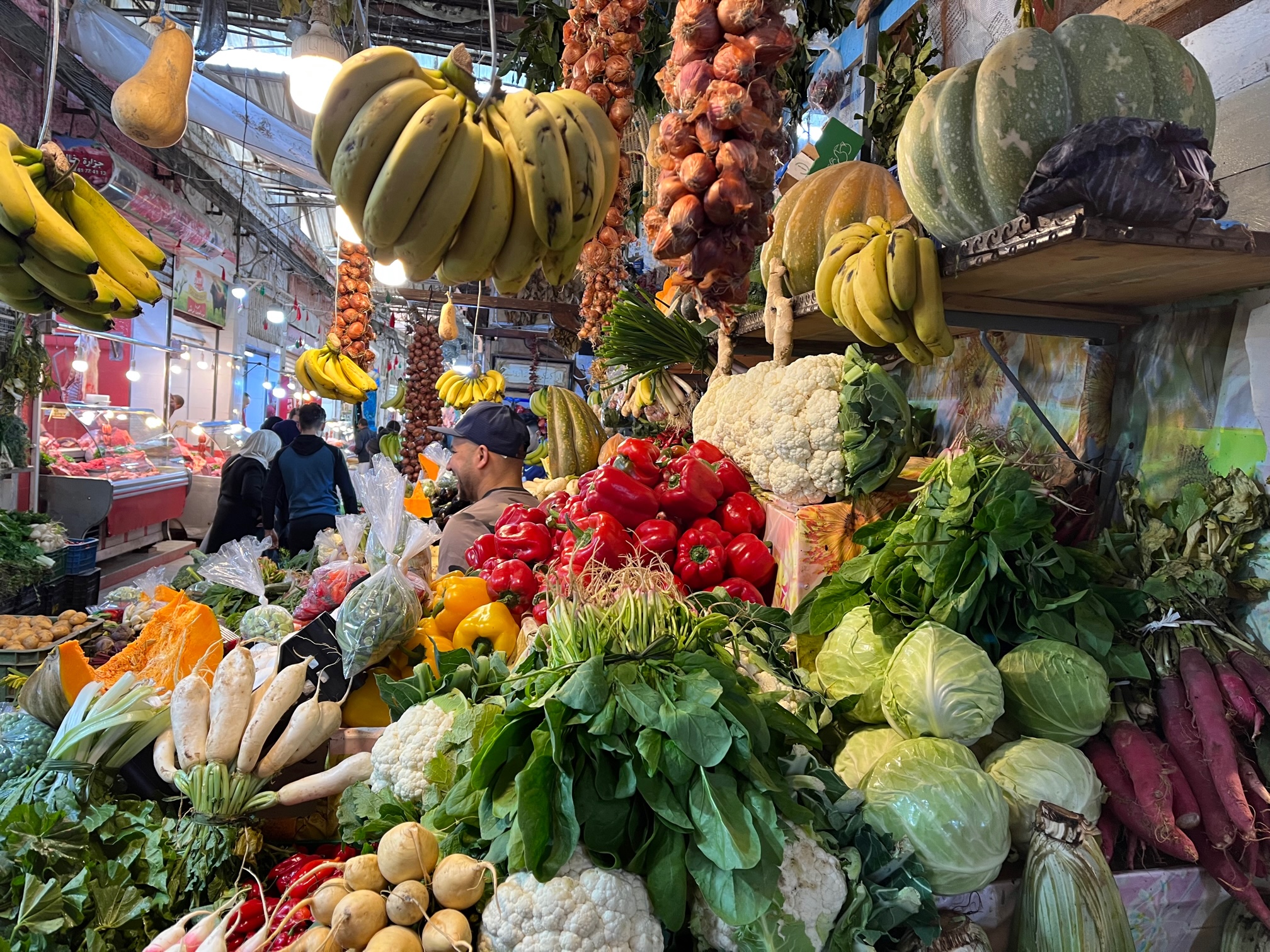
Always fun to visit the old city markets – fish, meats and fresh produce
Chefchaouen
A few hours drive south east of Tangier lies the mountain town of Chefchaouen also known as the Blue Pearl of Morocco. It was a wet, cold and gloomy gray day as we boarded our bus for a day trip. An hour out of Tangier and we were soon climbing up the Rif mountains. We stopped at Barrage Nakhla for coffee and Msemen with honey.
Soon we were approaching Chefchaouen and drove through the new town towards the medina higher up on the mountain. With the backdrop of the two horned (Chaouen) mountain, Chefchaouen stands out with its blue washed buildings. It is strikingly beautiful and different.
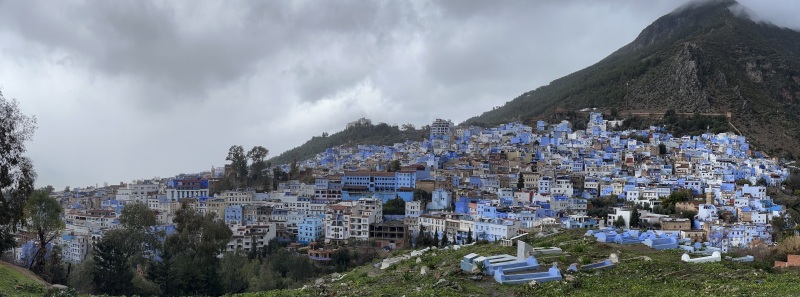
Panoramic view of Chefchaouen
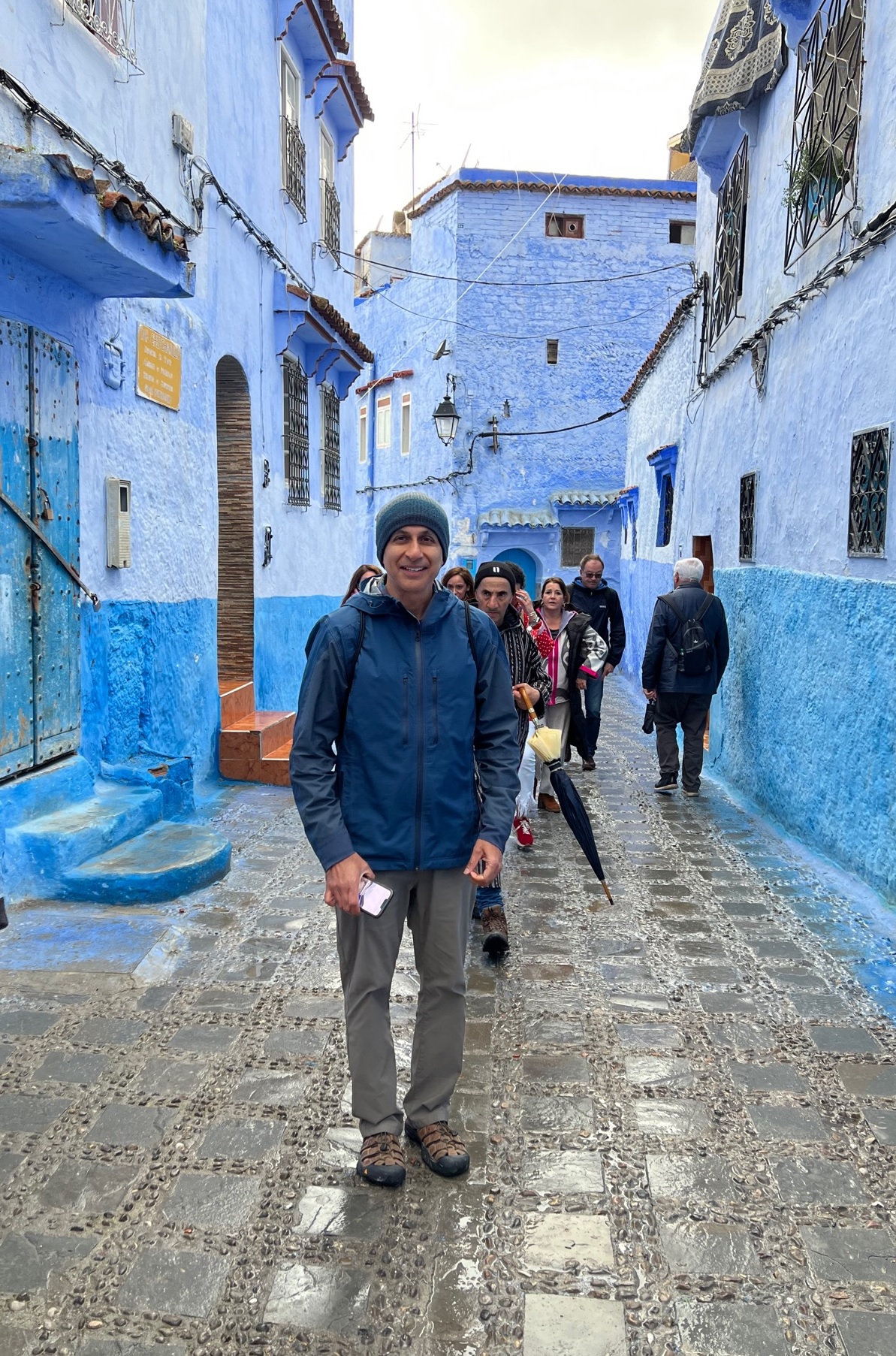
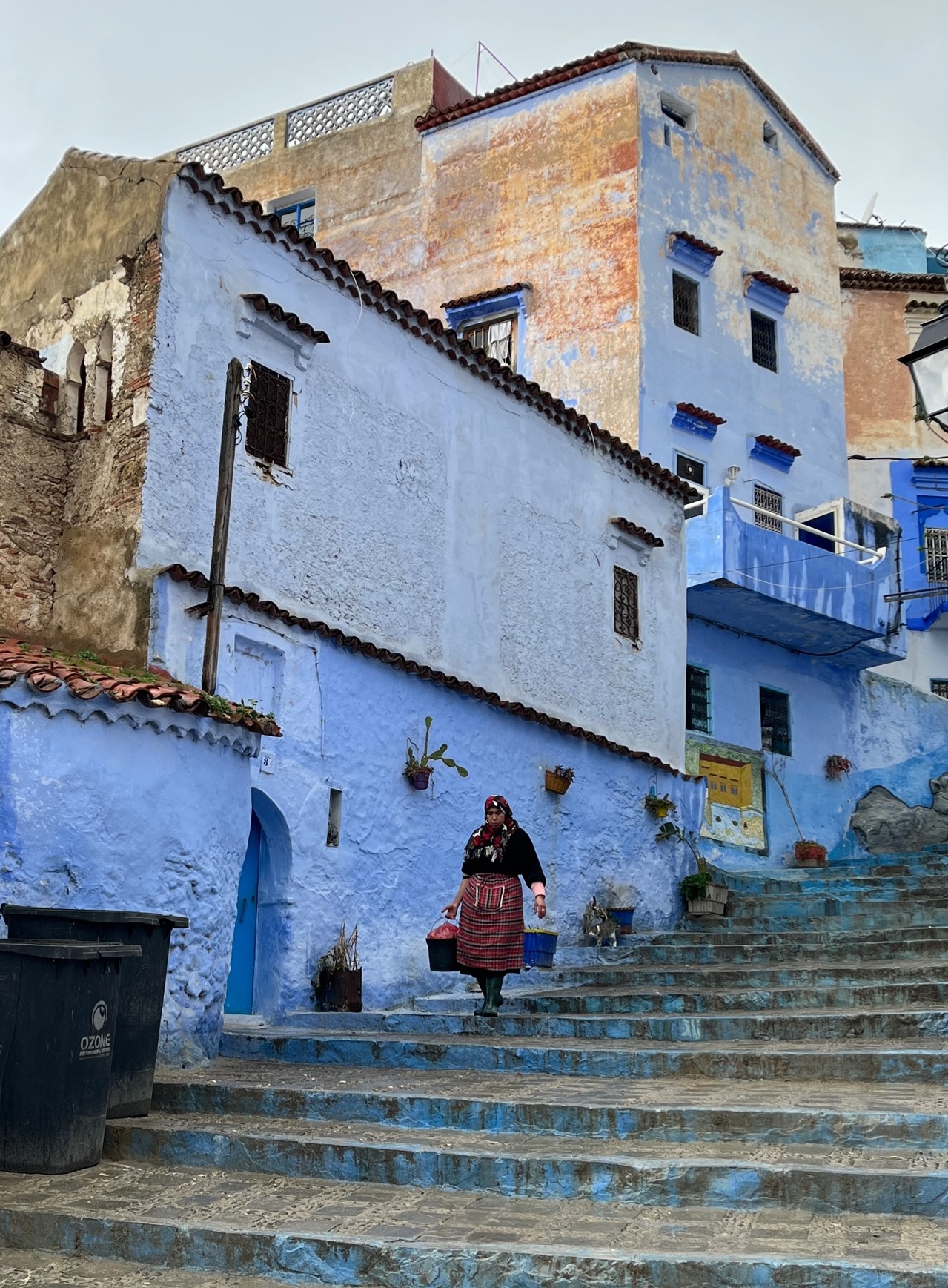
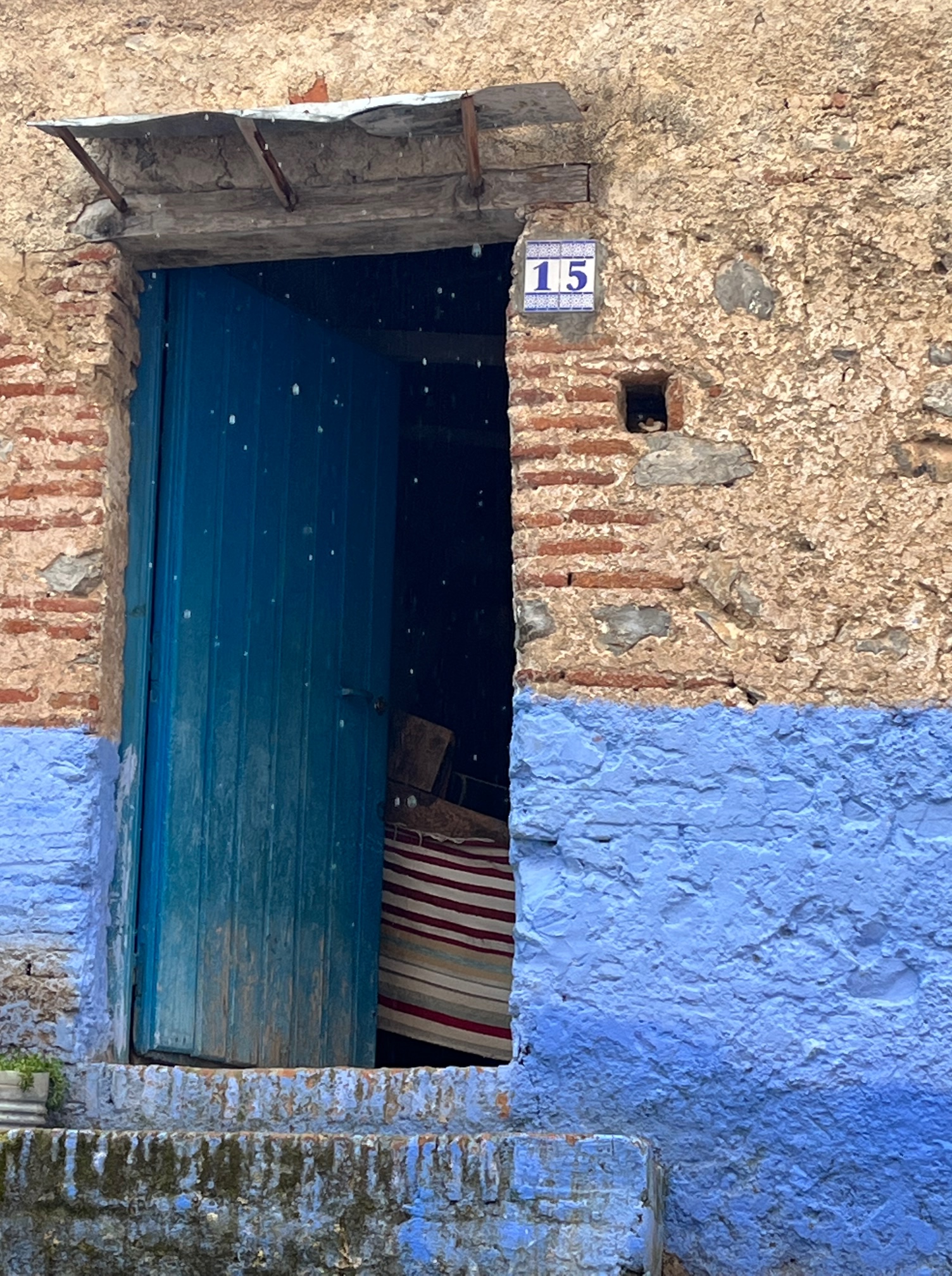
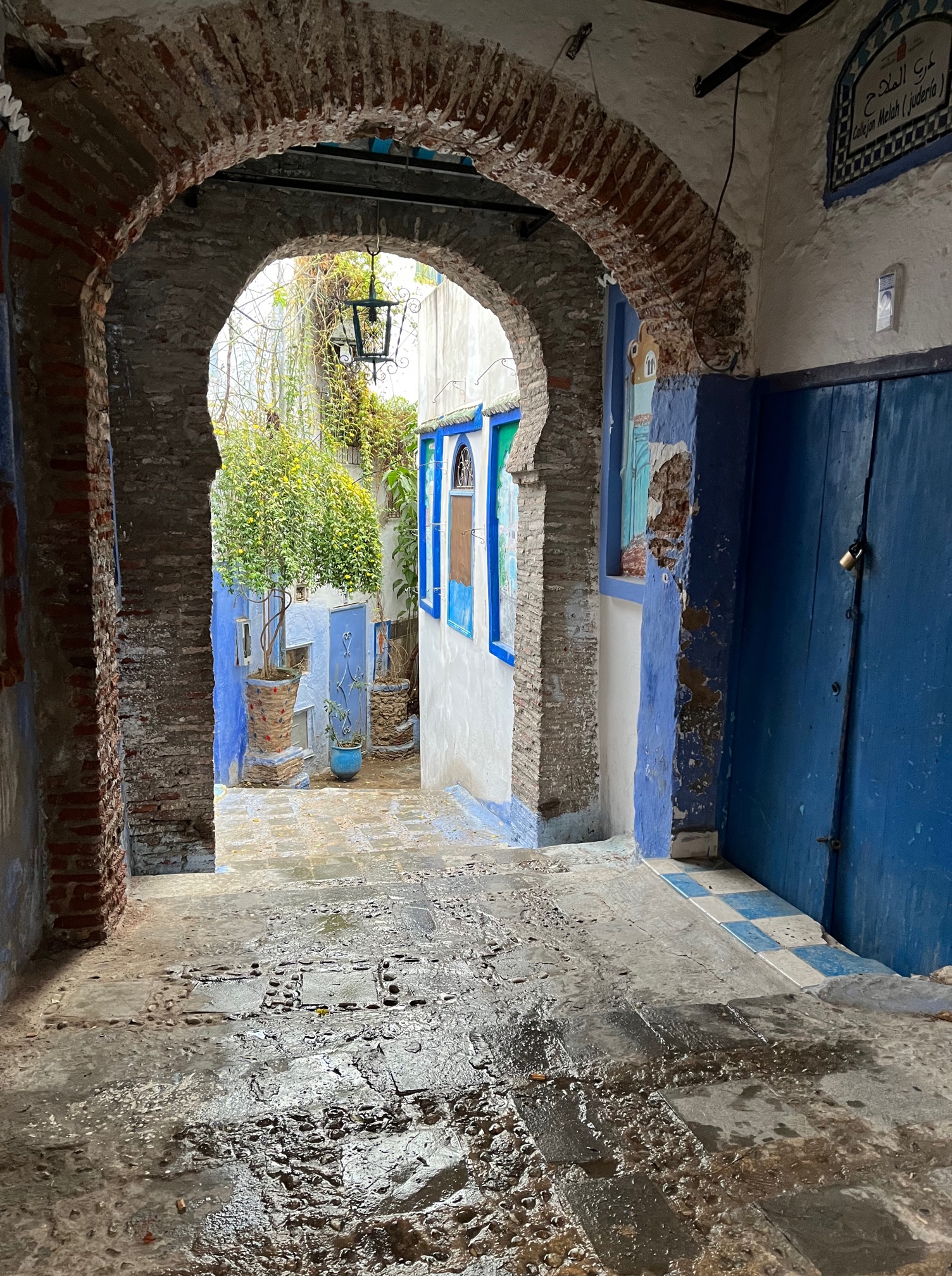
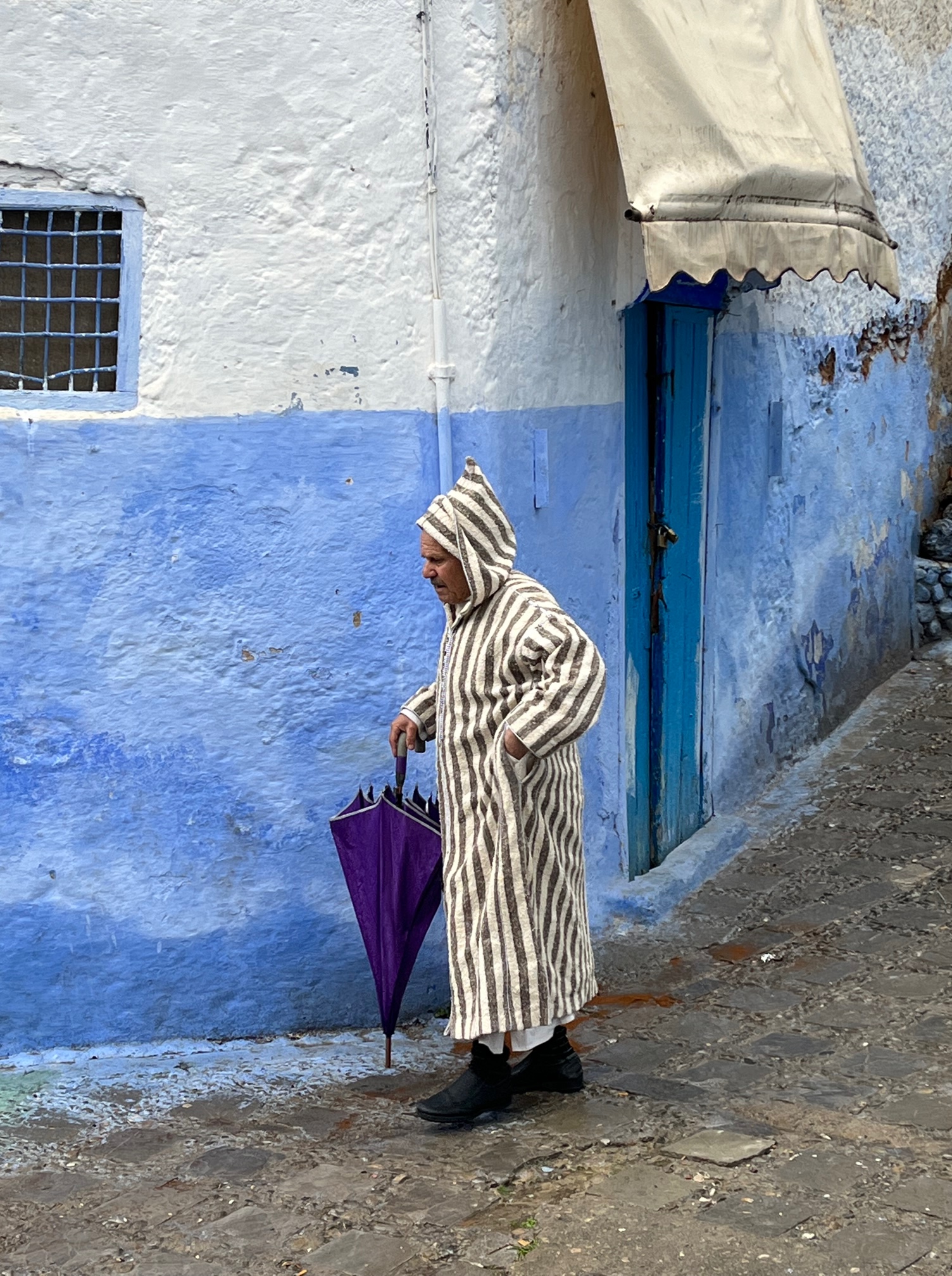
On these local trips we enjoy the company of other interesting travelers. There was a young German couple who had been traveling in a van all through eastern Europe for the past 6 months. Then there was this young Nigerian woman who had just climbed the snow clad summit of Mount Toubkal, the highest peak in Africa, the day before.
Fez
We took the slow train to Fez from Tangiers a journey of 4 hours. I say “slow” because Morocco (like France) actually has high-speed trains something that the US is still debating about. We had assigned seats and the journey was quite comfortable. The main train stations in the big cities like Tangier and Rabat are like international airports – modern structures with high-end stores and name brand restaurants and coffee shops.
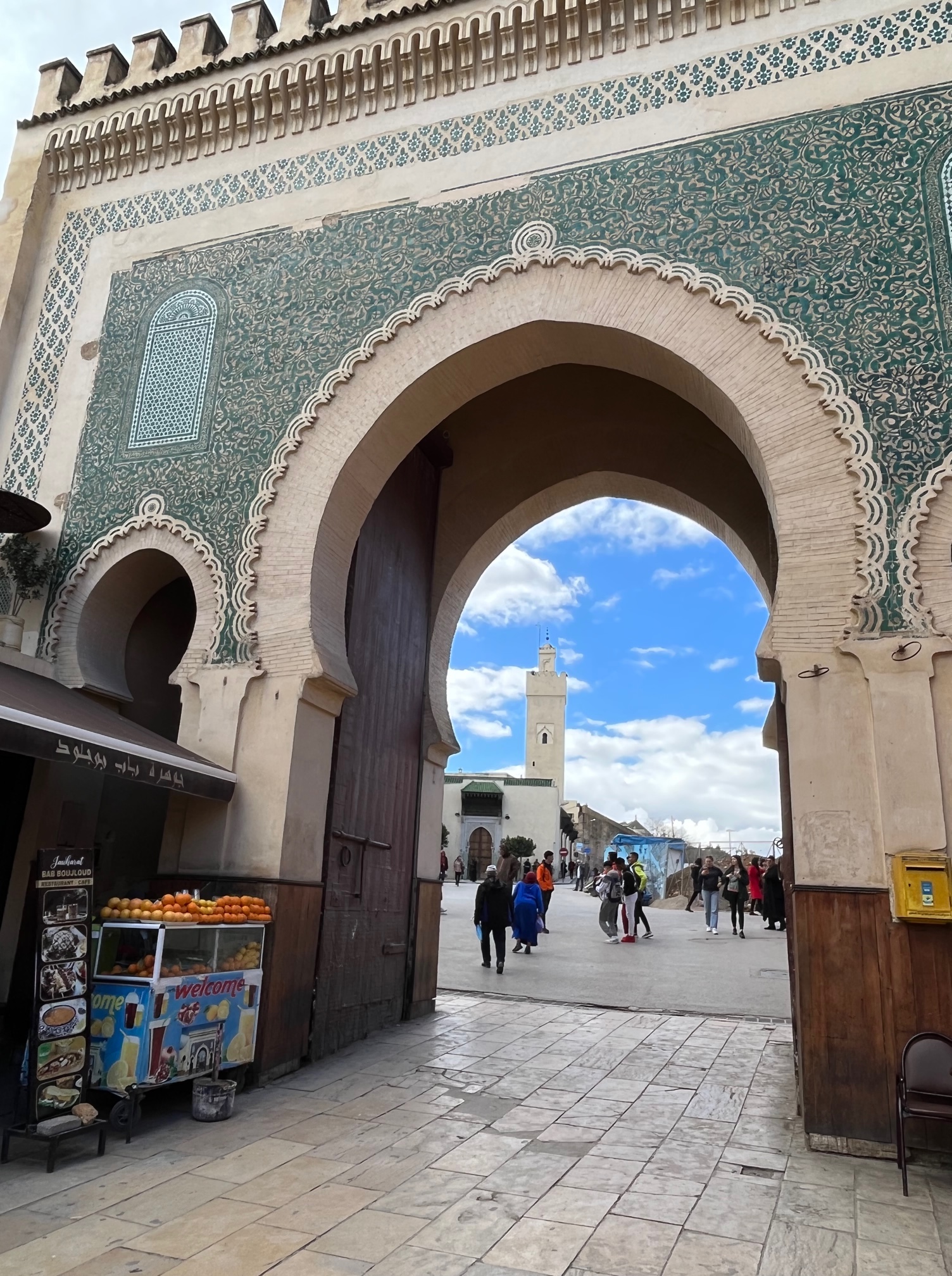
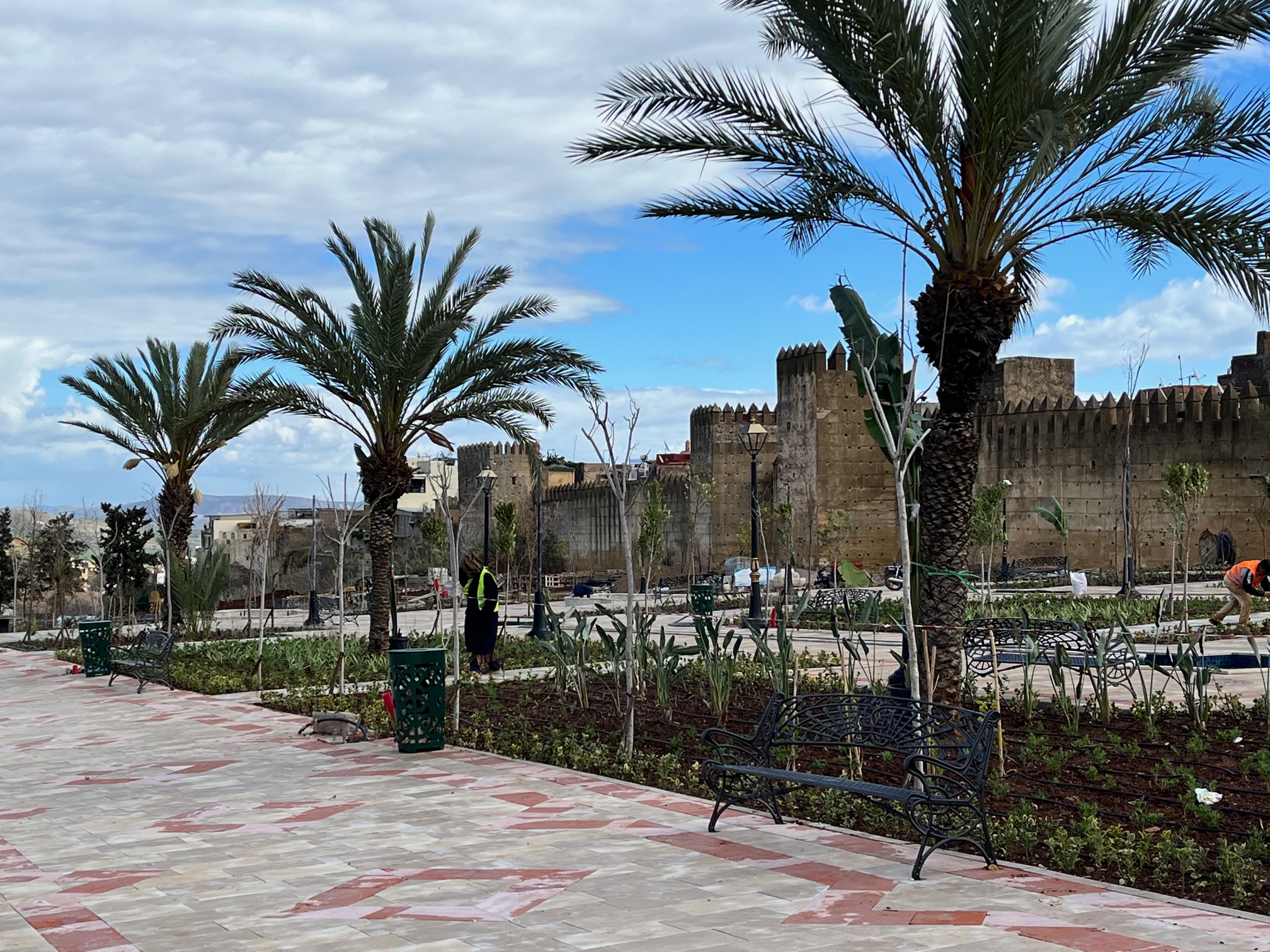
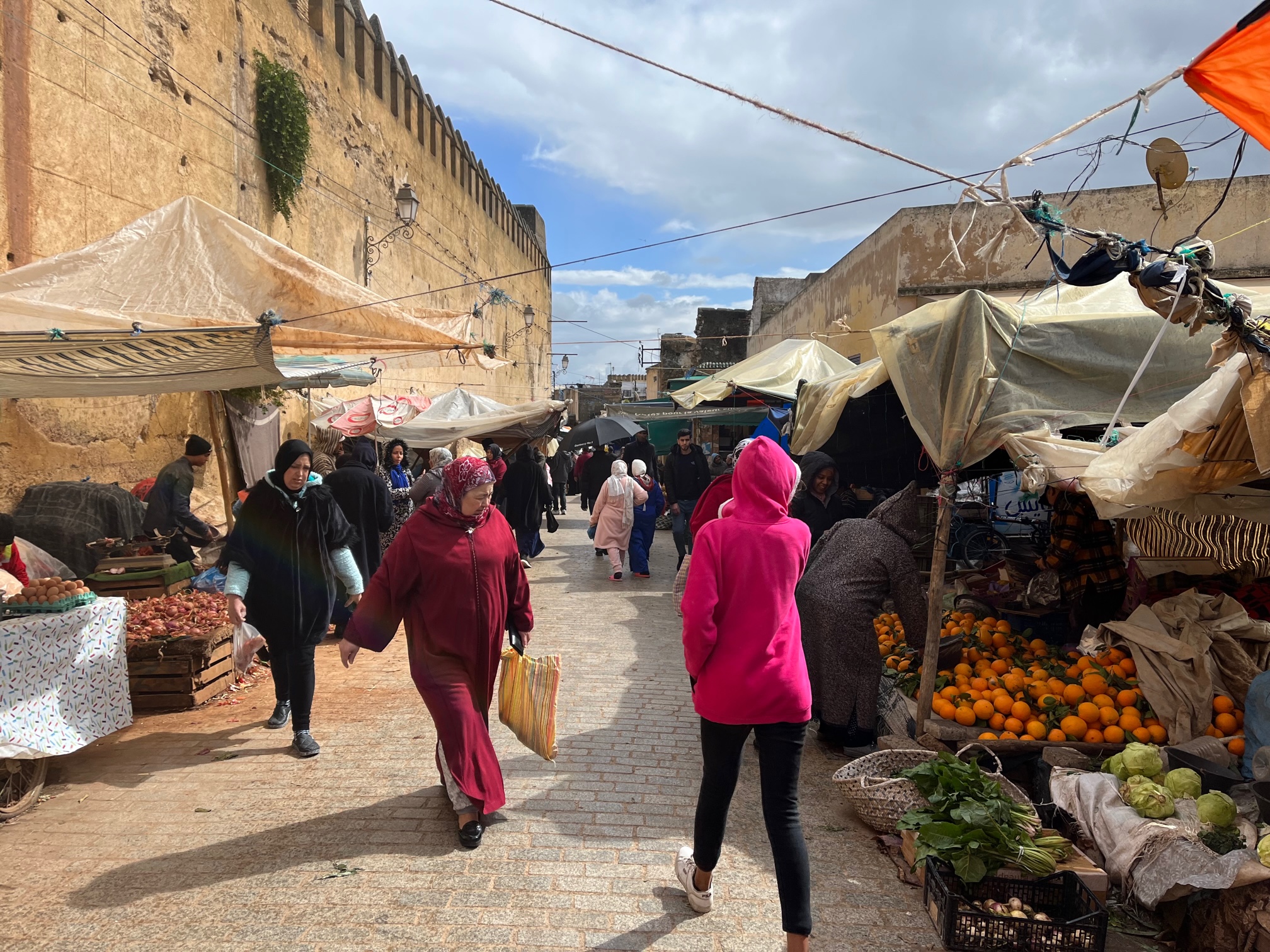
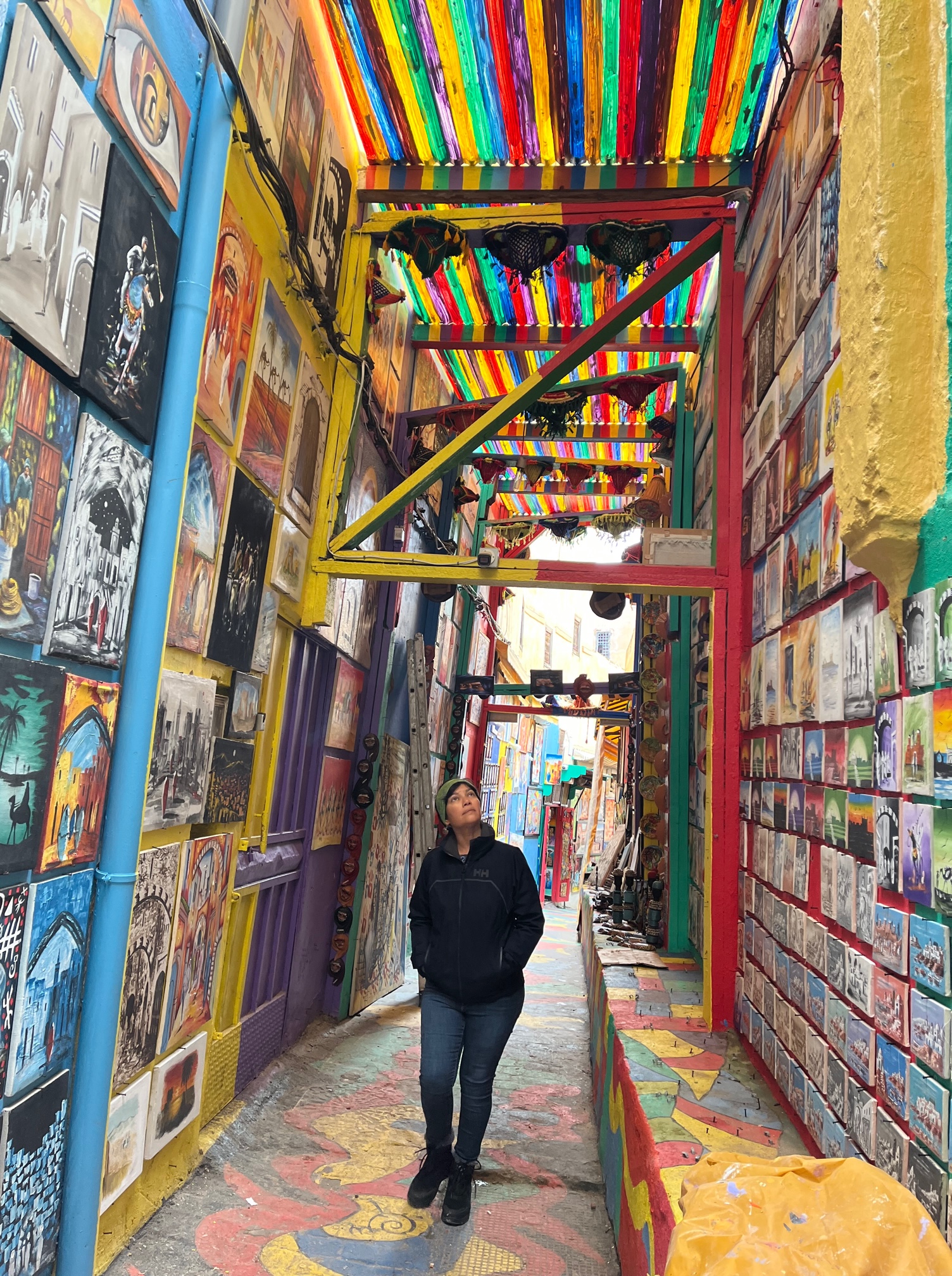
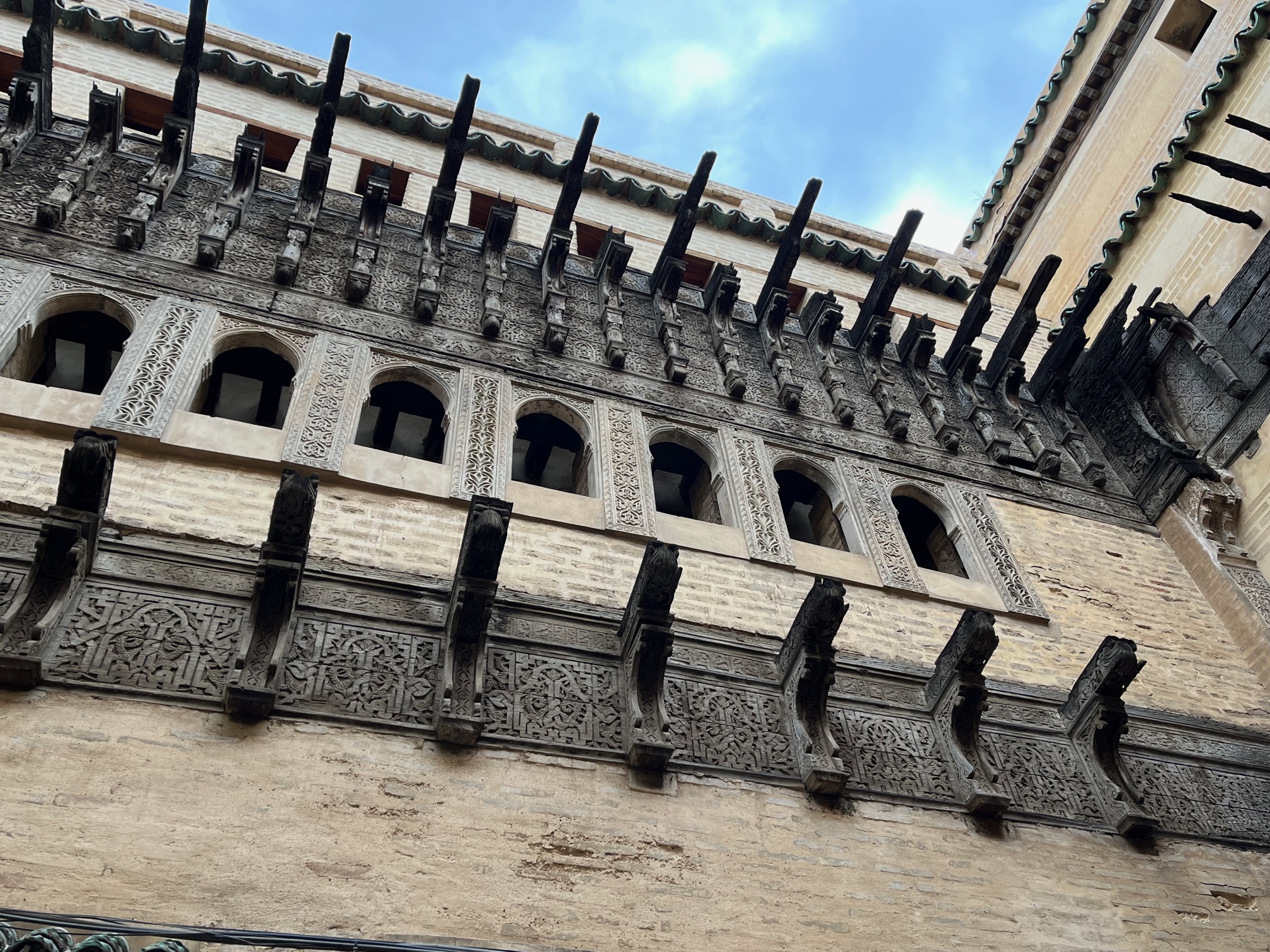
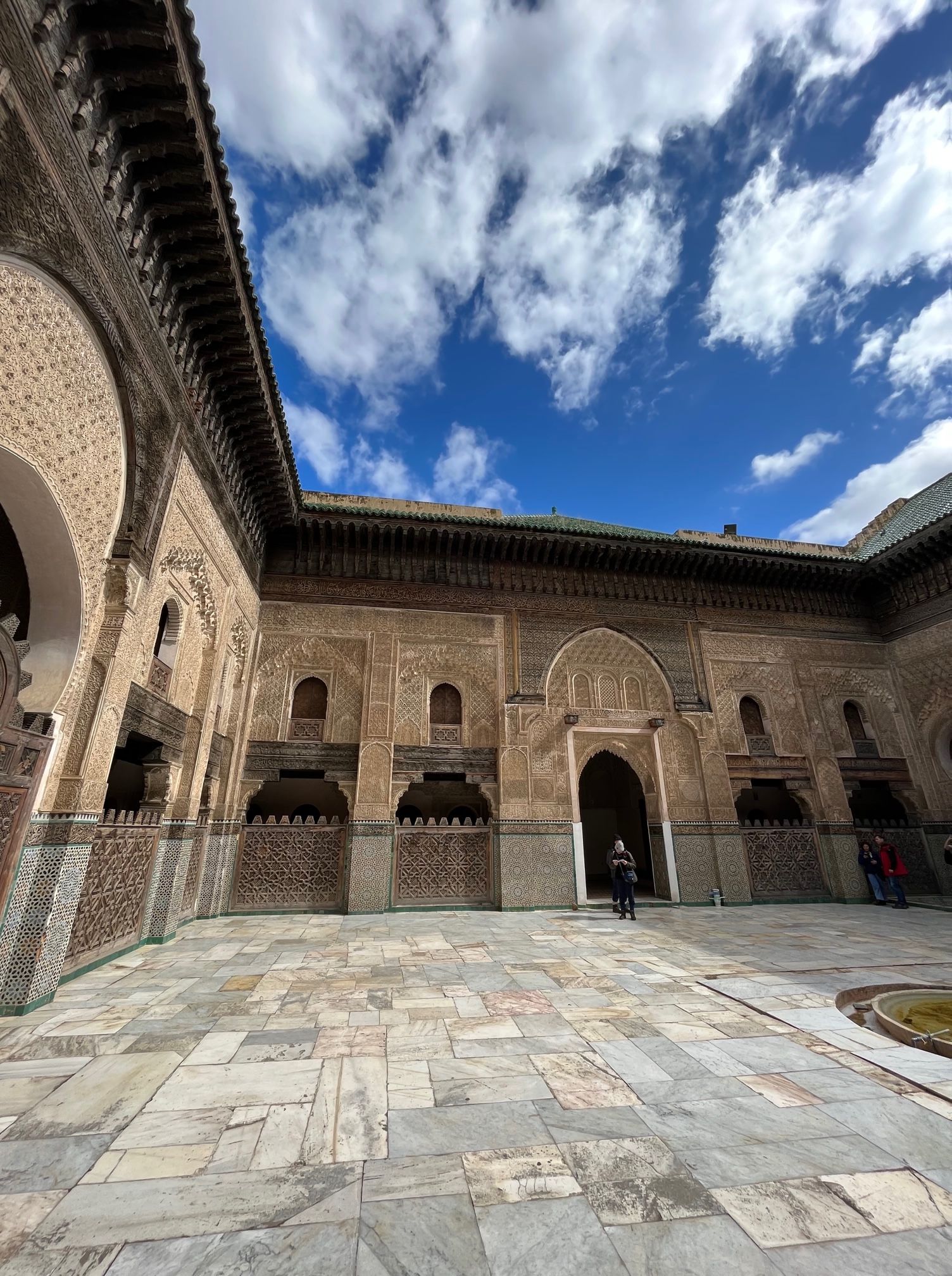
Fez is a medieval city where its medina is home to artisans who create products in the same way it has been done for centuries, using skills passed down from generations. There is very little if any automation or even mechanization. This “hand-made the old fashioned way” is essentially the brand that they market to all those who visit. Hand spun yarn is dyed using natural dyes. These yarns are then used to weave carpets with vibrant patterns by women who design it as they weave. Nothing is drawn on paper and they toil for months to complete a single piece. It is hard to negotiate price when you see the work that goes into making one. We have no need for carpets – we live on a boat. Still we ended up buying two!
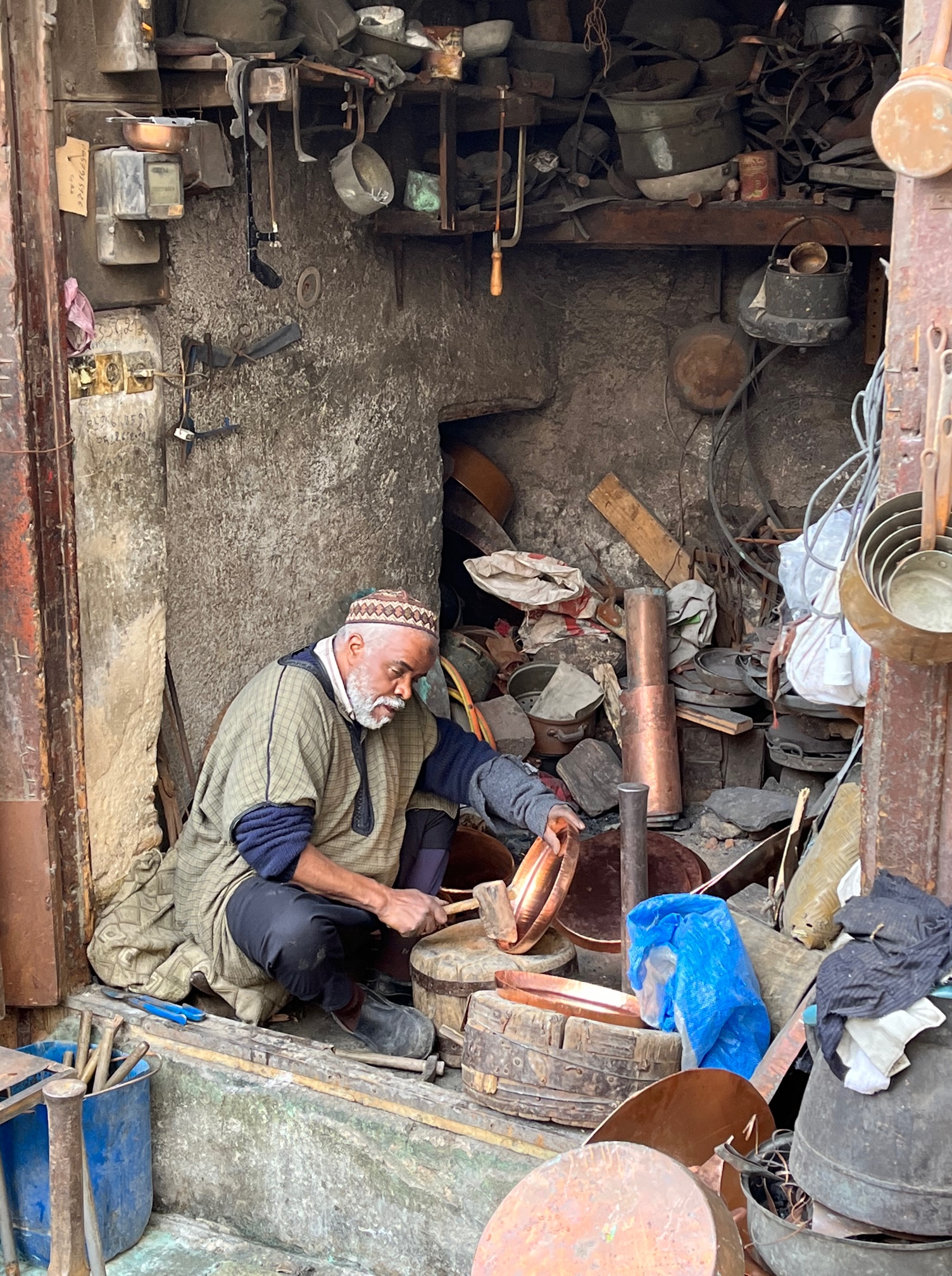
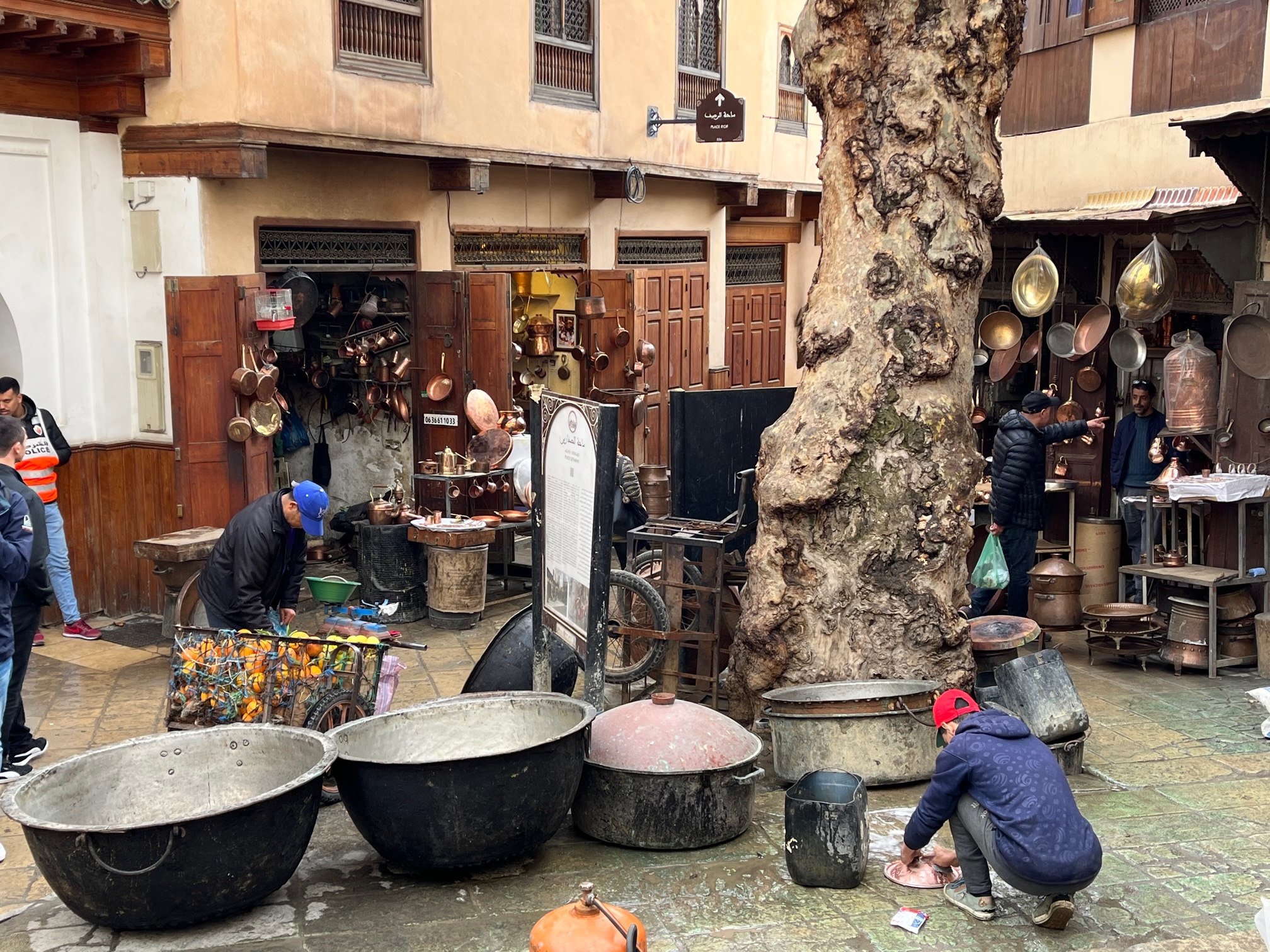
Metal workers in the Metal Souk
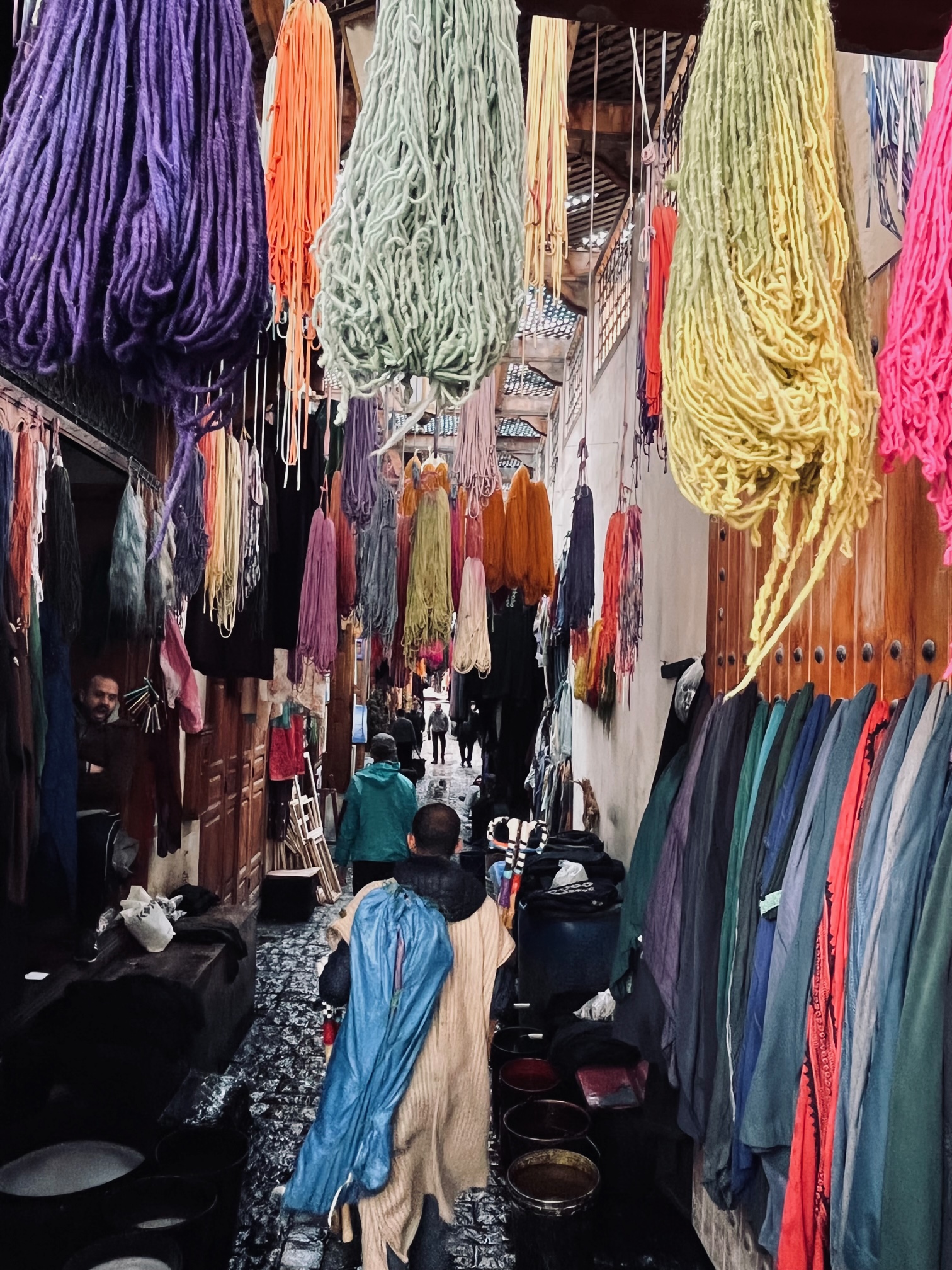
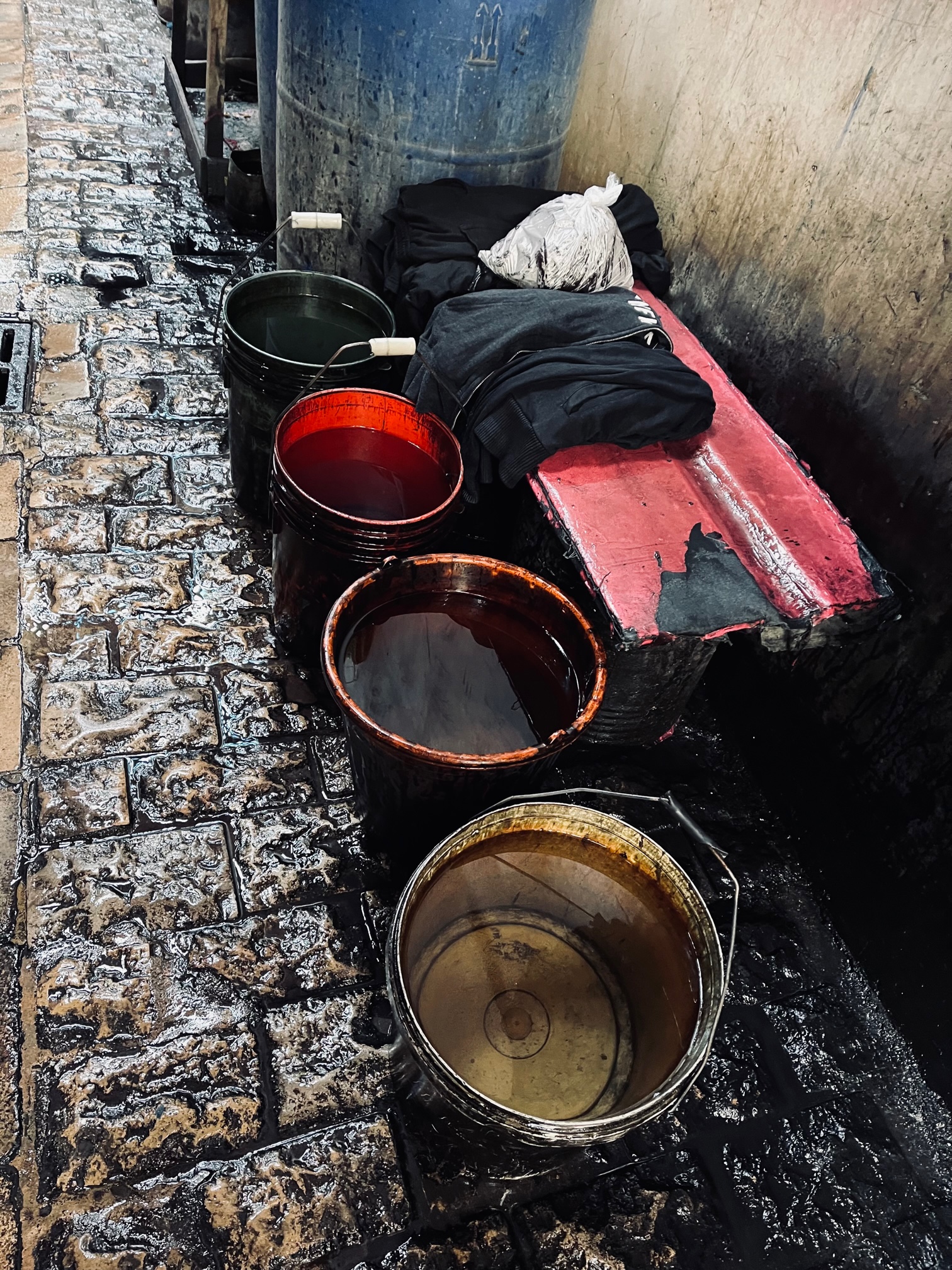
Handspun yarn colored using natural dyes the old fashioned way
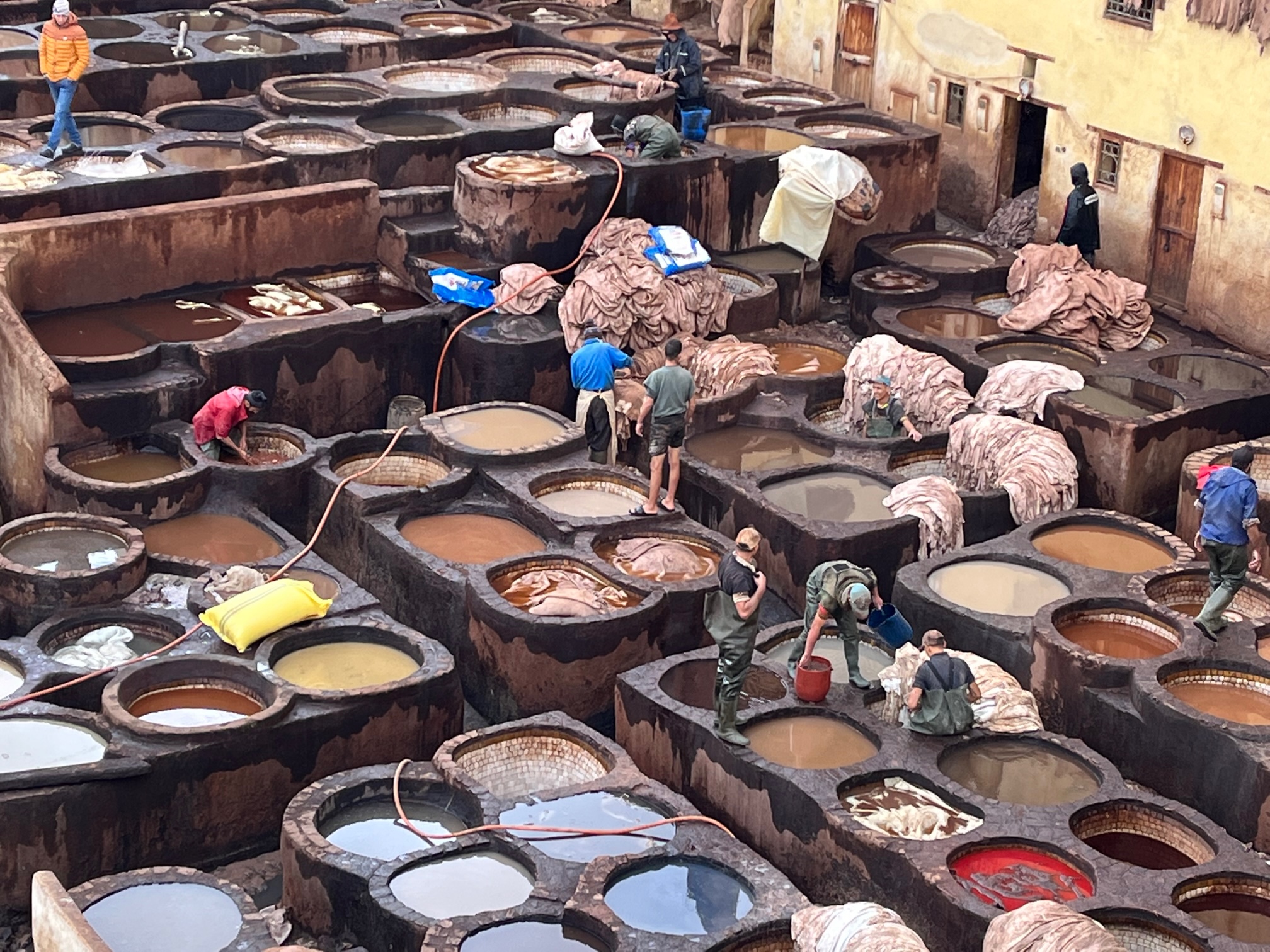
Chouara Tannery in continuous operation since the 11th century
We sometimes choose to spend time in cemeteries in places we visit. They have so many interesting stories to tell about lives lived in town. Frequently they offer us insight into the extraordinary lives of ordinary people – the journalist, the town doctor, mother who died during child birth, a writer or the successful businessman. I remember visiting an old grave in a cemetery in Montparnasse, Paris which was covered with tram tickets. It belonged to a local performer and people who visited the grave site would leave their tram ticket as a sign of respect.
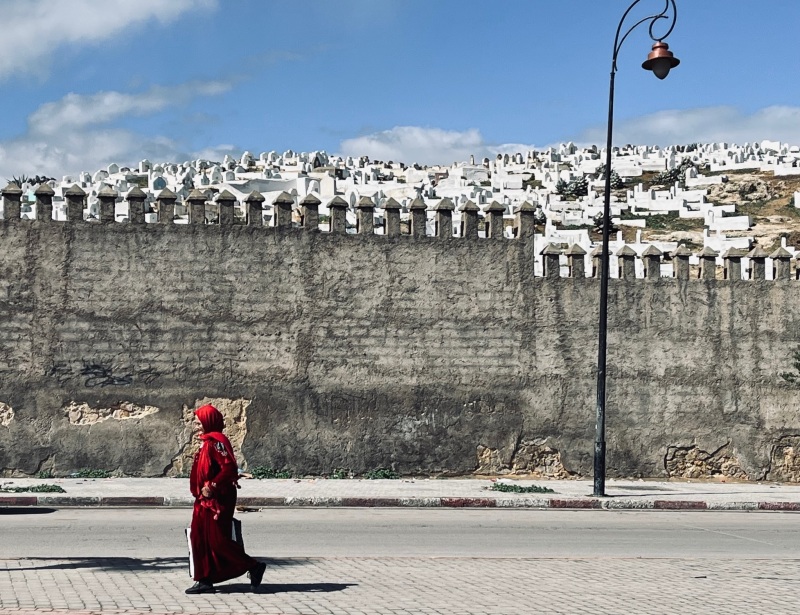
A hillside cemetery
The cemeteries in Fez are hard to miss. They occupy the high ground around the medina and in a place where generations have lived and died for centuries the graves cover a large area across multiple hills. Unfortunately all the inscriptions were in Arabic so we did not learn much about the people buried there.
Rabat
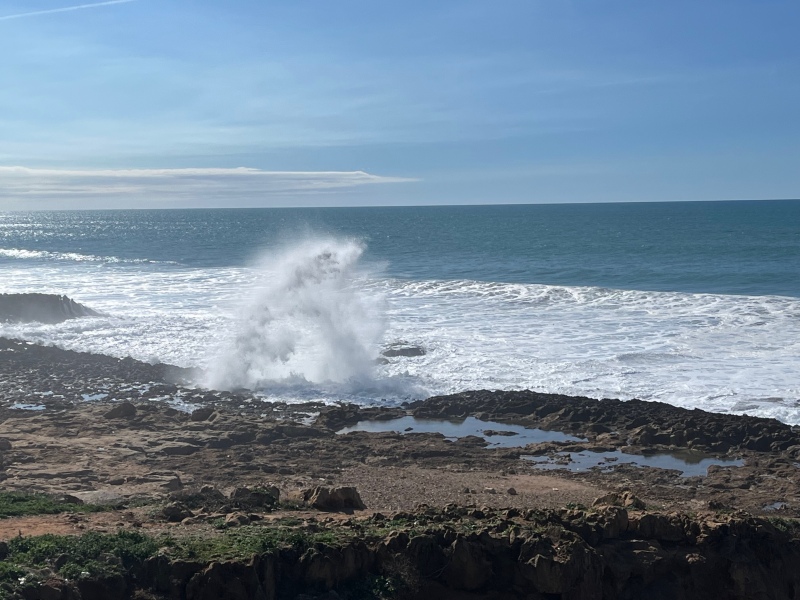
The rugged coast line of Rabat
Rabat is the capital of Morocco. It is an old city and a new one. We picked Rabat because it is a port city with a marina and at one point we had thought of sailing here on route to Canary Islands. We arrived by train from Fez to a modern train terminal in the Agdal section of Rabat. Rabat and Sale are actually two cities on either side of the Bouregreg river and therefore called the “twin cities”. Its rough coastline takes the full brunt of the Atlantic waves.
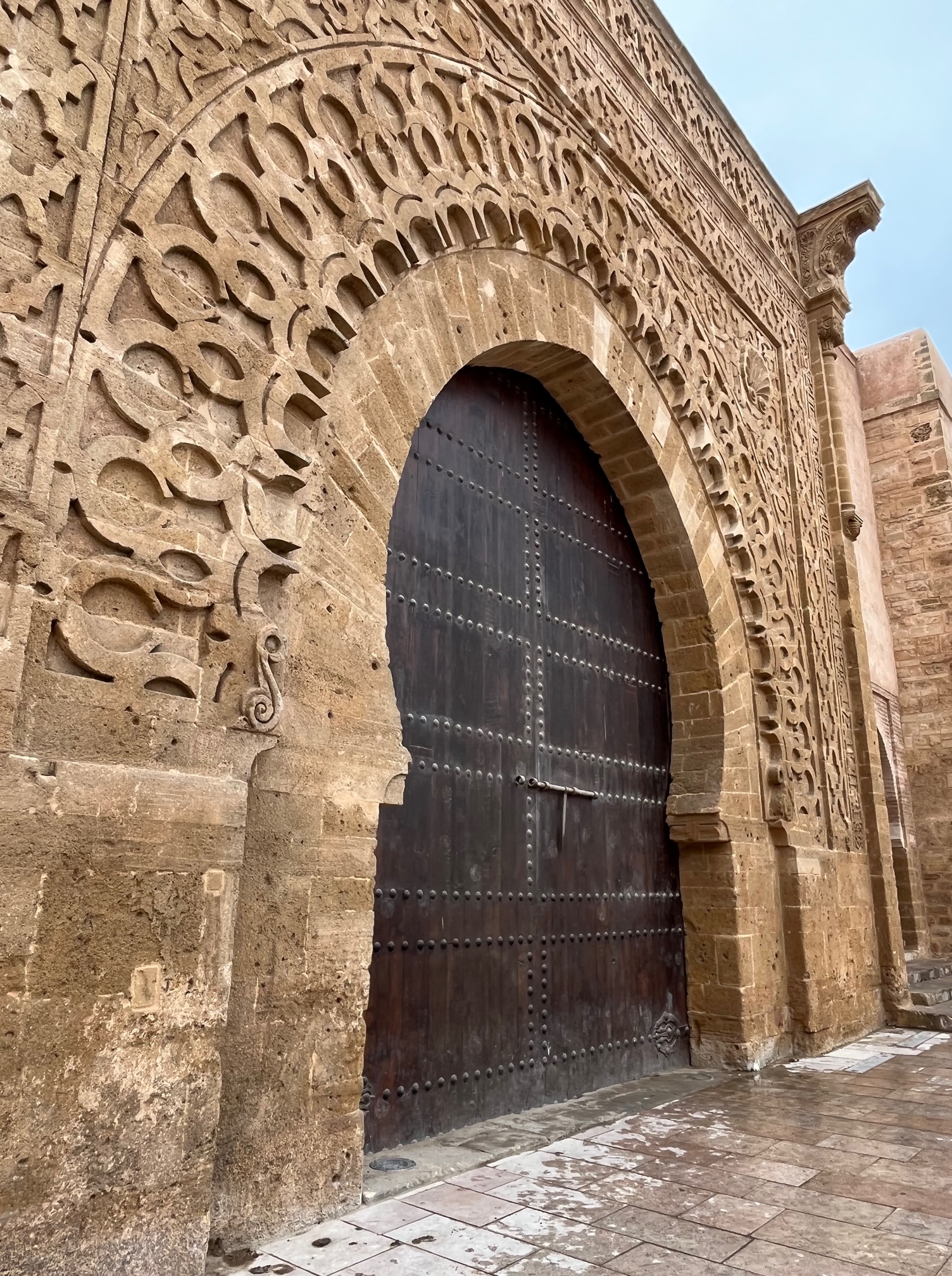
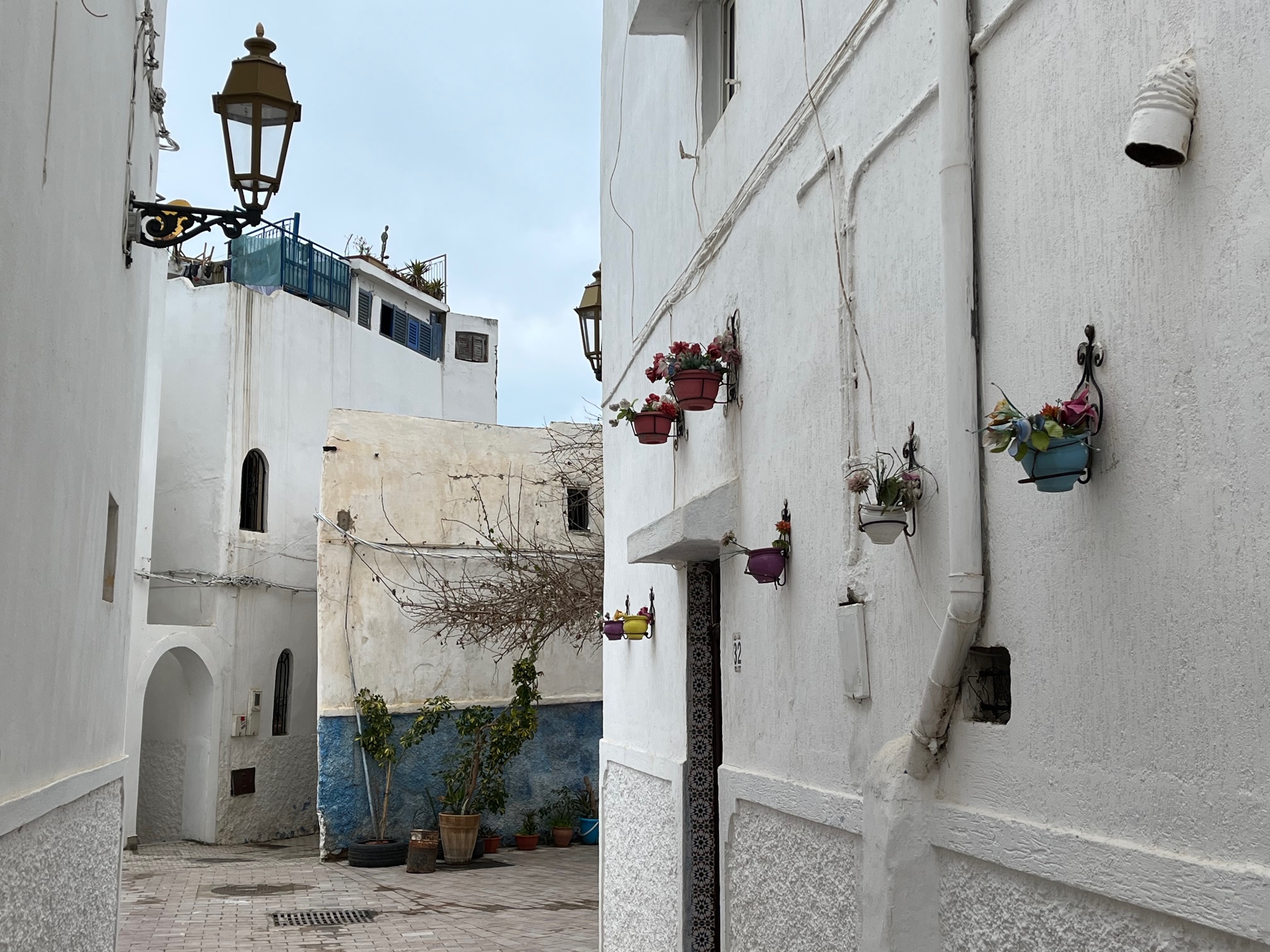
Kasbah of the Udayas
Kasbah of the Udayas built in the 12th century is a former military outpost. It has been restored and like Medinas elsewhere in Morocco there are homes within its walls and people who live there. It is situated high up on a hill overlooking the bay. We took a trail down to the beach popular among surfers. That day we saw surfing schools in progress with many surfers in the water.
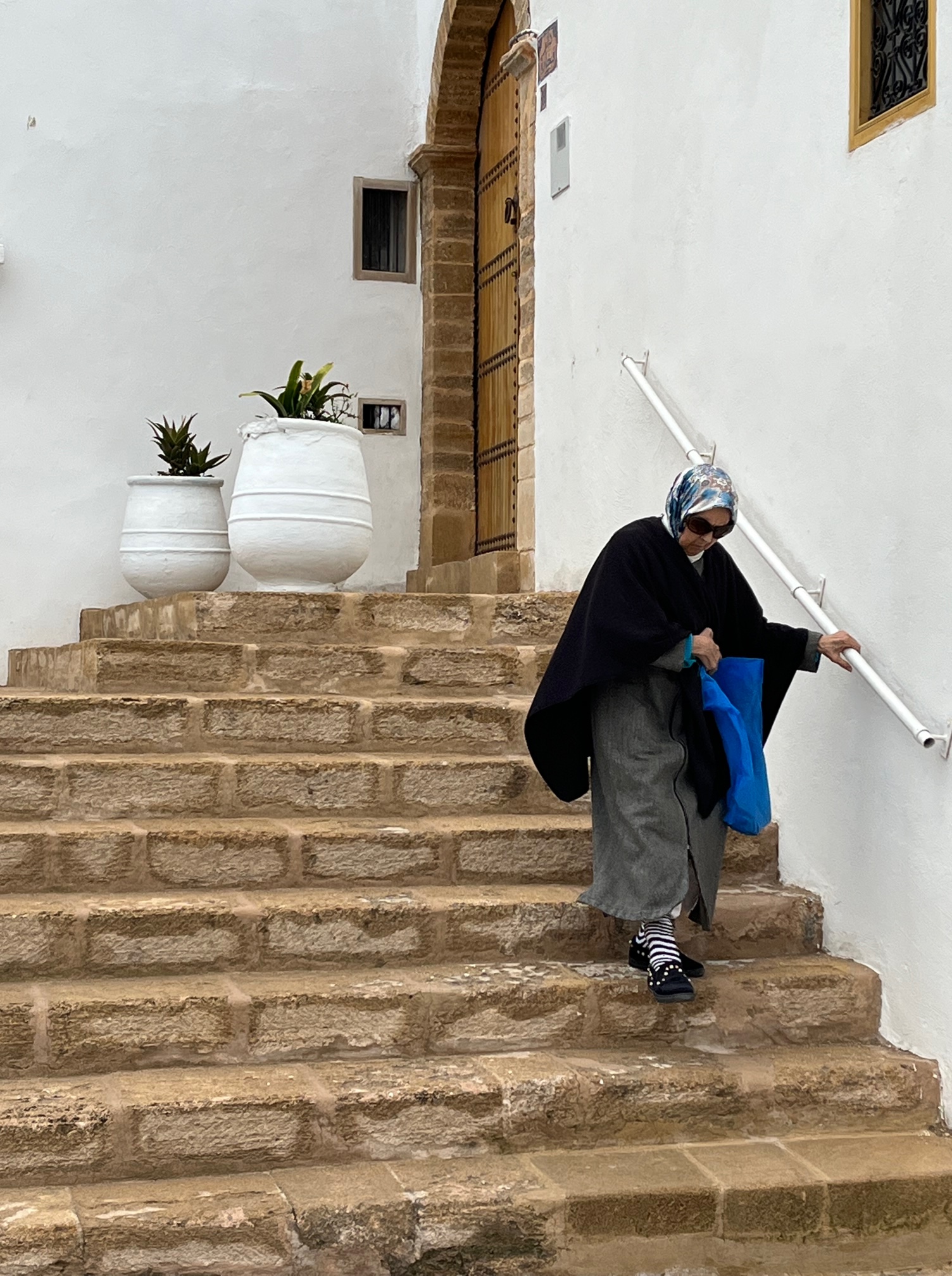
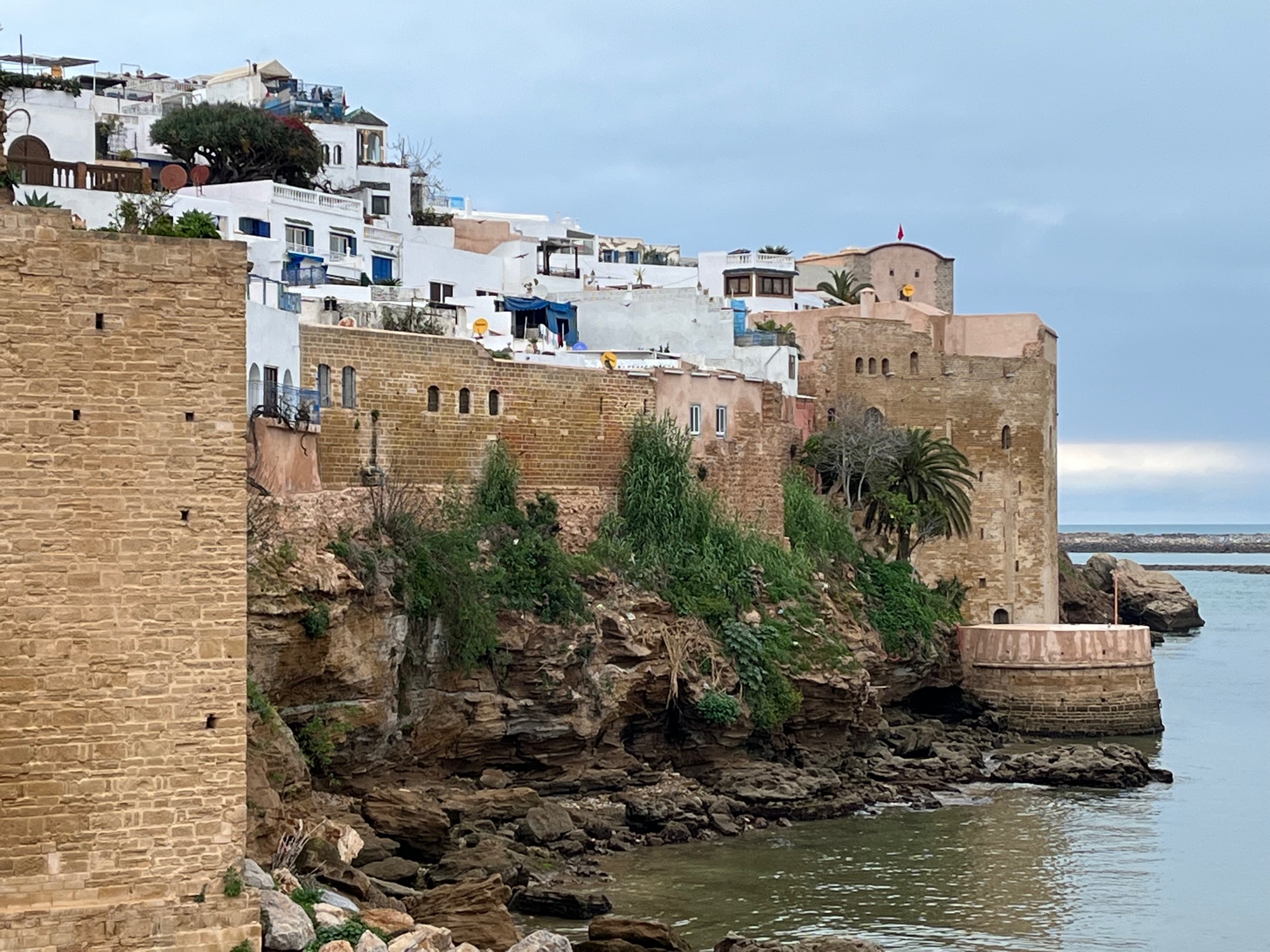
And within the fortified walls are the Andalusian gardens with exotic plants, flowers and fruit trees. It is a peaceful place to rest with exceptional views of the bay from its café. It also houses a museum that has an impressive collection of hand made objects such as furniture, jewelry etc. from the various regions of Morocco.
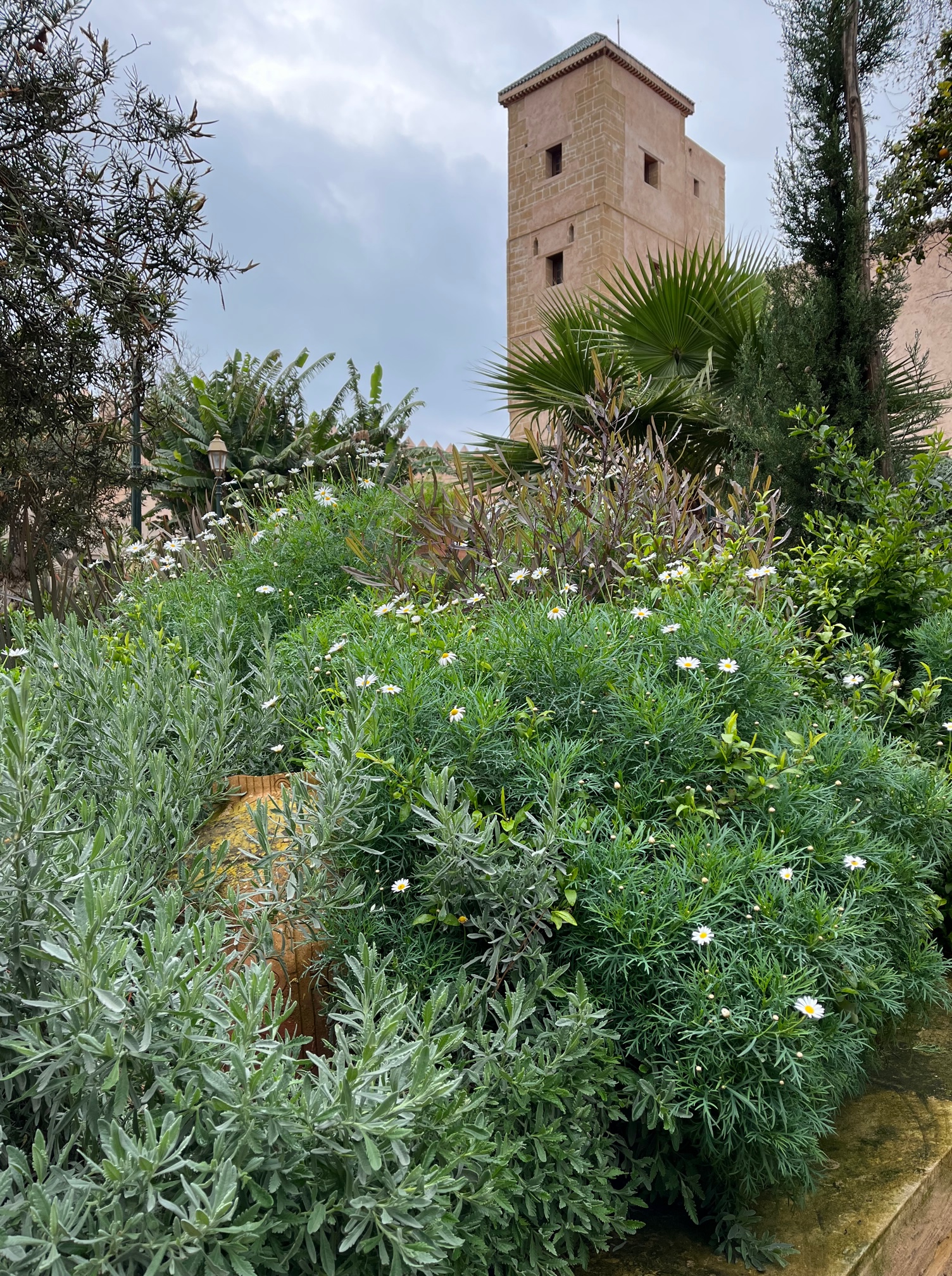
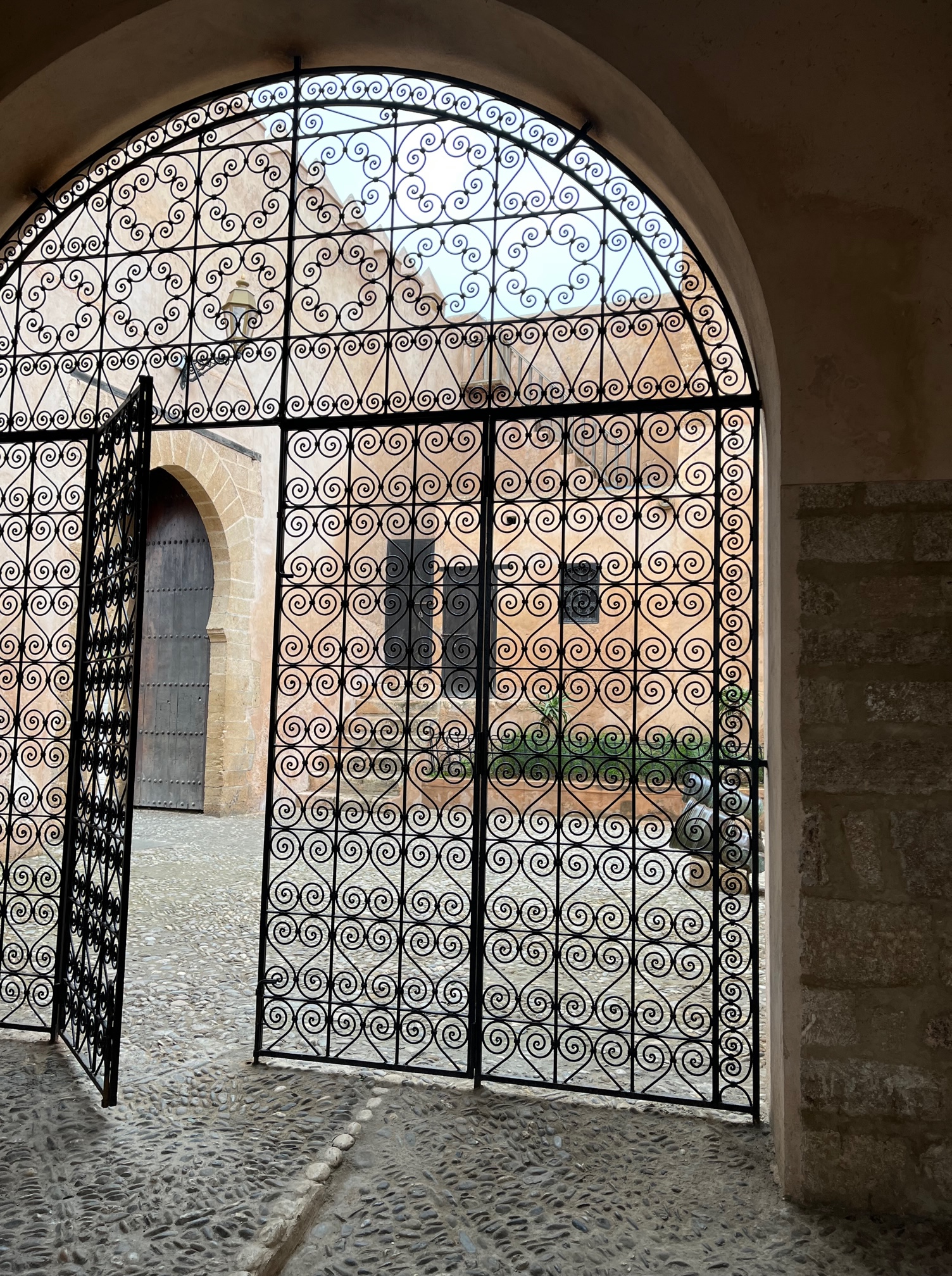
On our last day we had several hours before our flight and wanted to make the most of our remaining time in Rabat. For a change we decided to go to the new part of town – Ville Nouvelle. This is modern Morocco well planned, organized and completely different from the Medina. We started at Mohammad VI Museum of Modern and Contemporary Art. The exhibition of modern African artists, specifically from Benin, was fascinating.
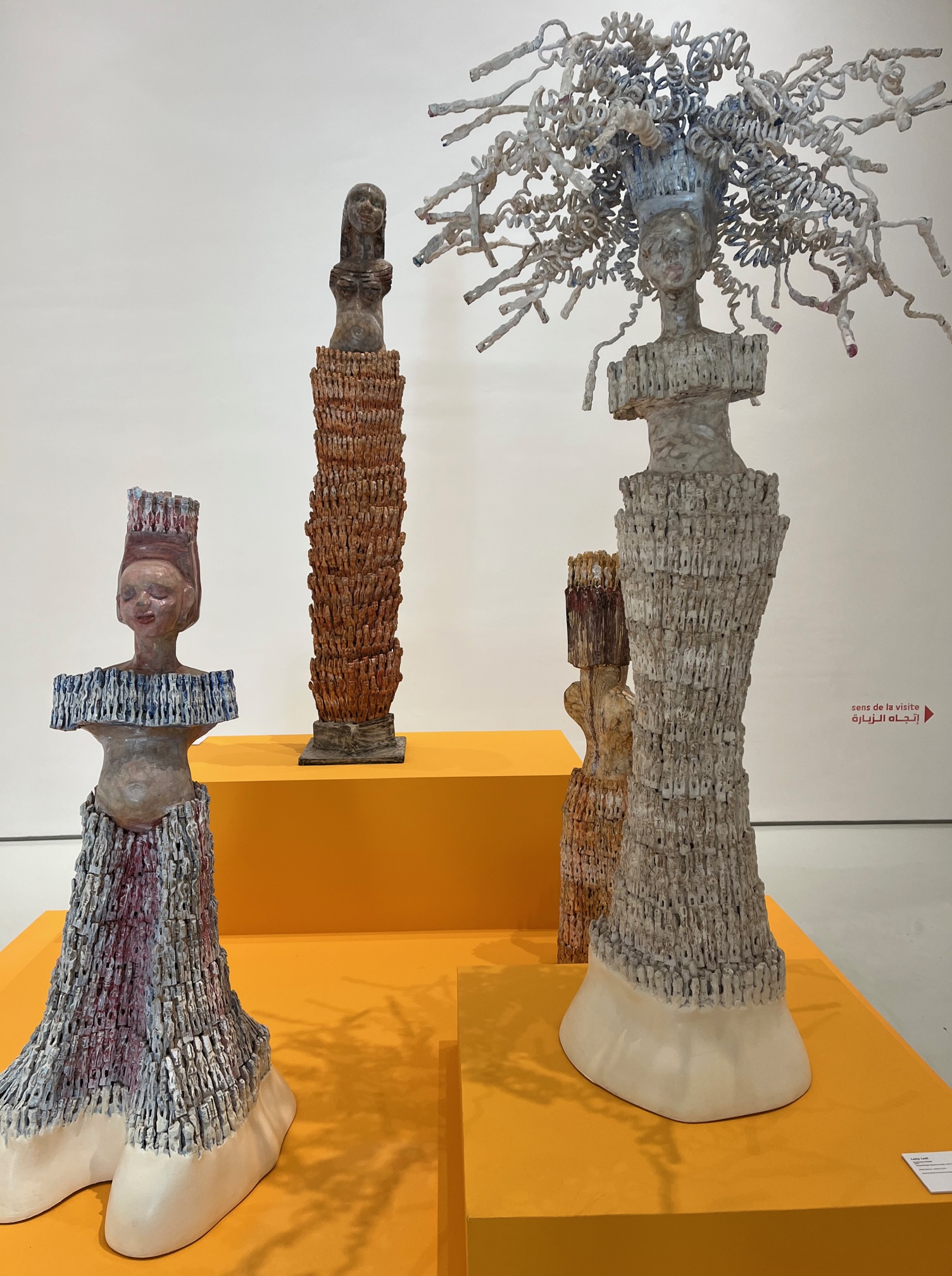
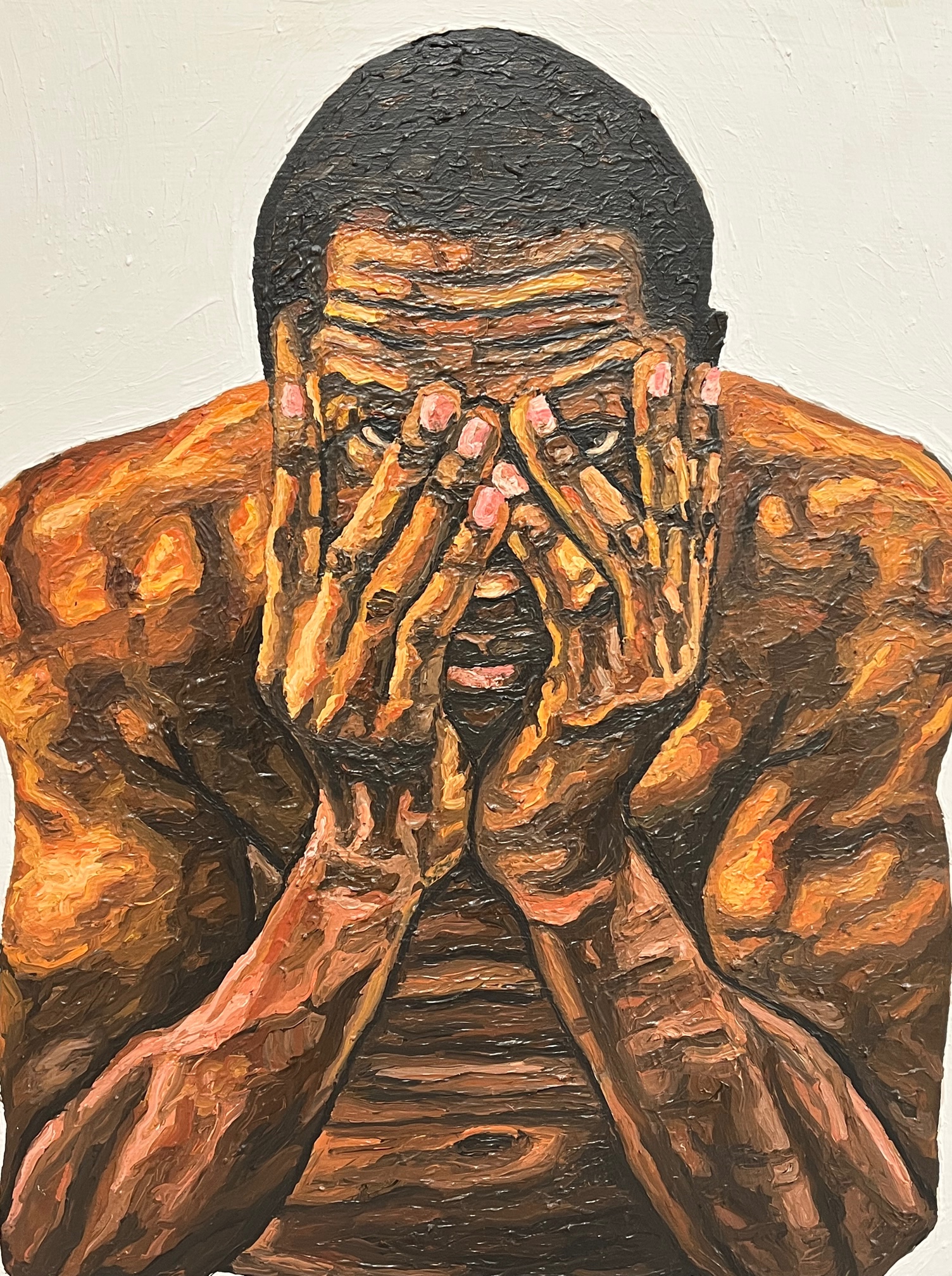
Exhibits at Mohammad VI Museum of Modern and Contemporary Art
As we cut across the city, we walked through the Jardin Botanique d’Essais (Botanical Gardens) and a few neighborhoods – some with exclusive homes with walled compounds and other more working class neighborhoods with kids playing soccer on the streets and onto some poorer sections with derelict homes. We got a sense of the full spectrum of Moroccan city living. Finally we reached the waters edge and ahead was the whole expanse of the Atlantic ocean and somewhere out there is Canary Islands our next sailing destination.
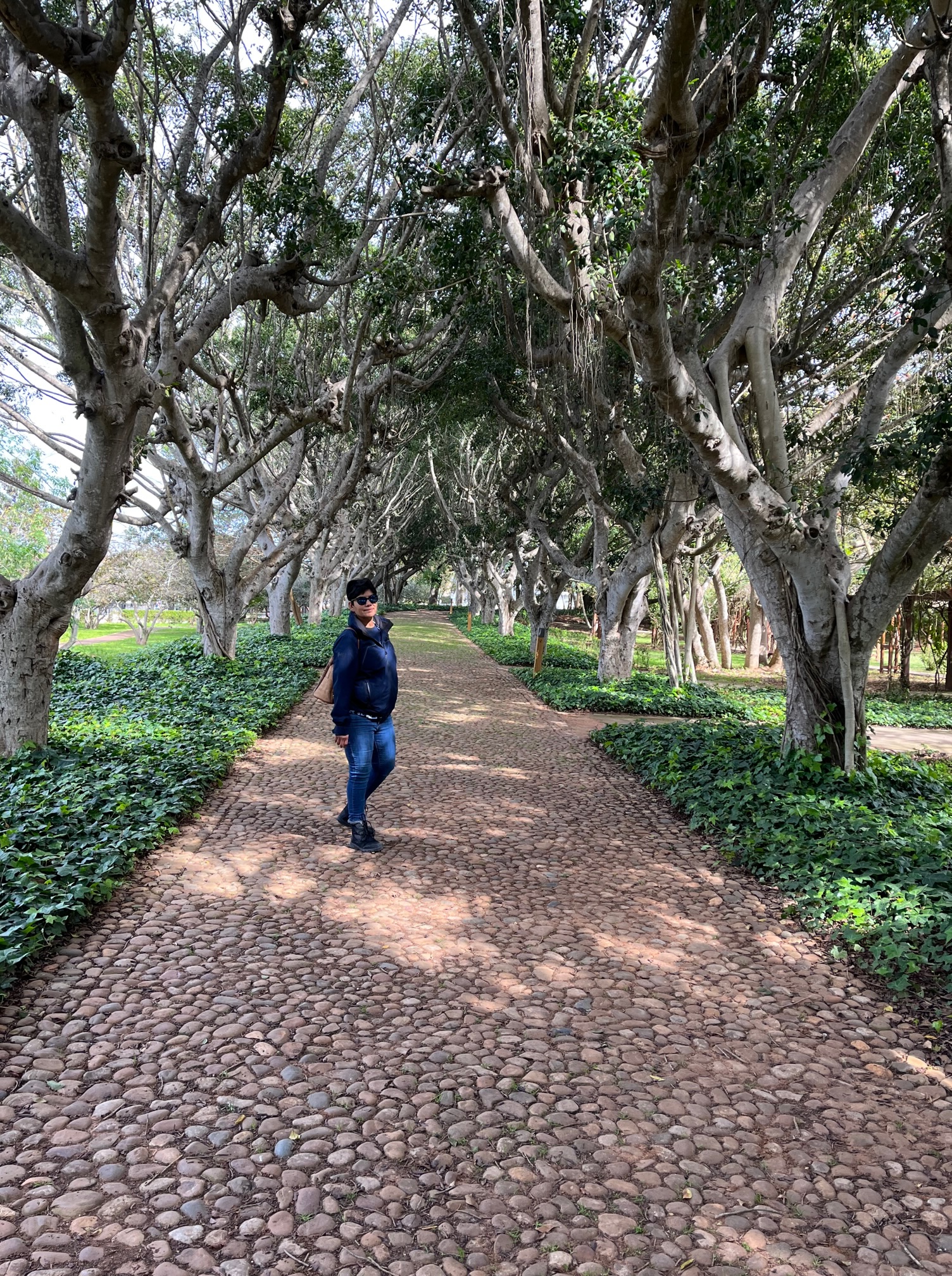
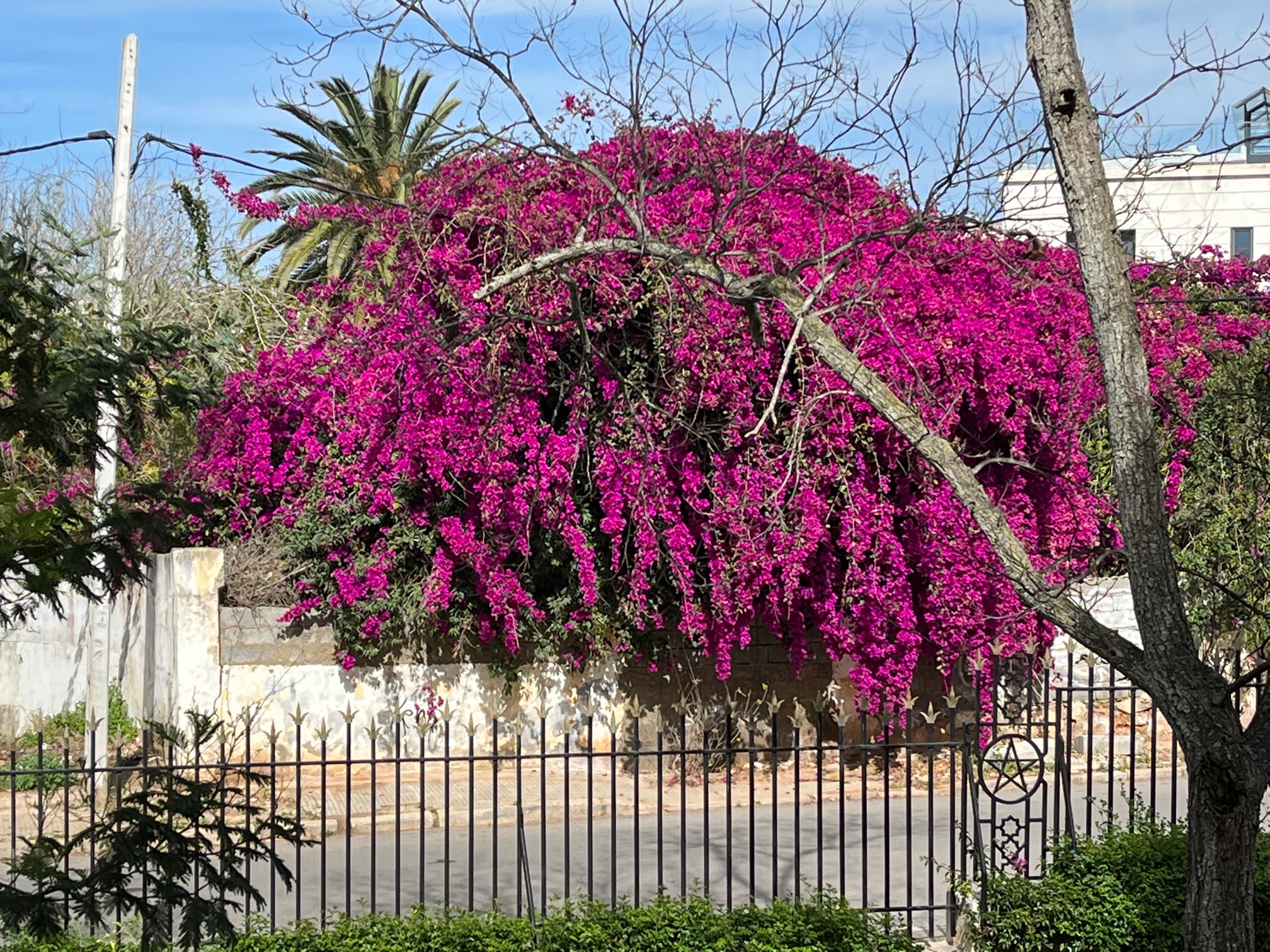
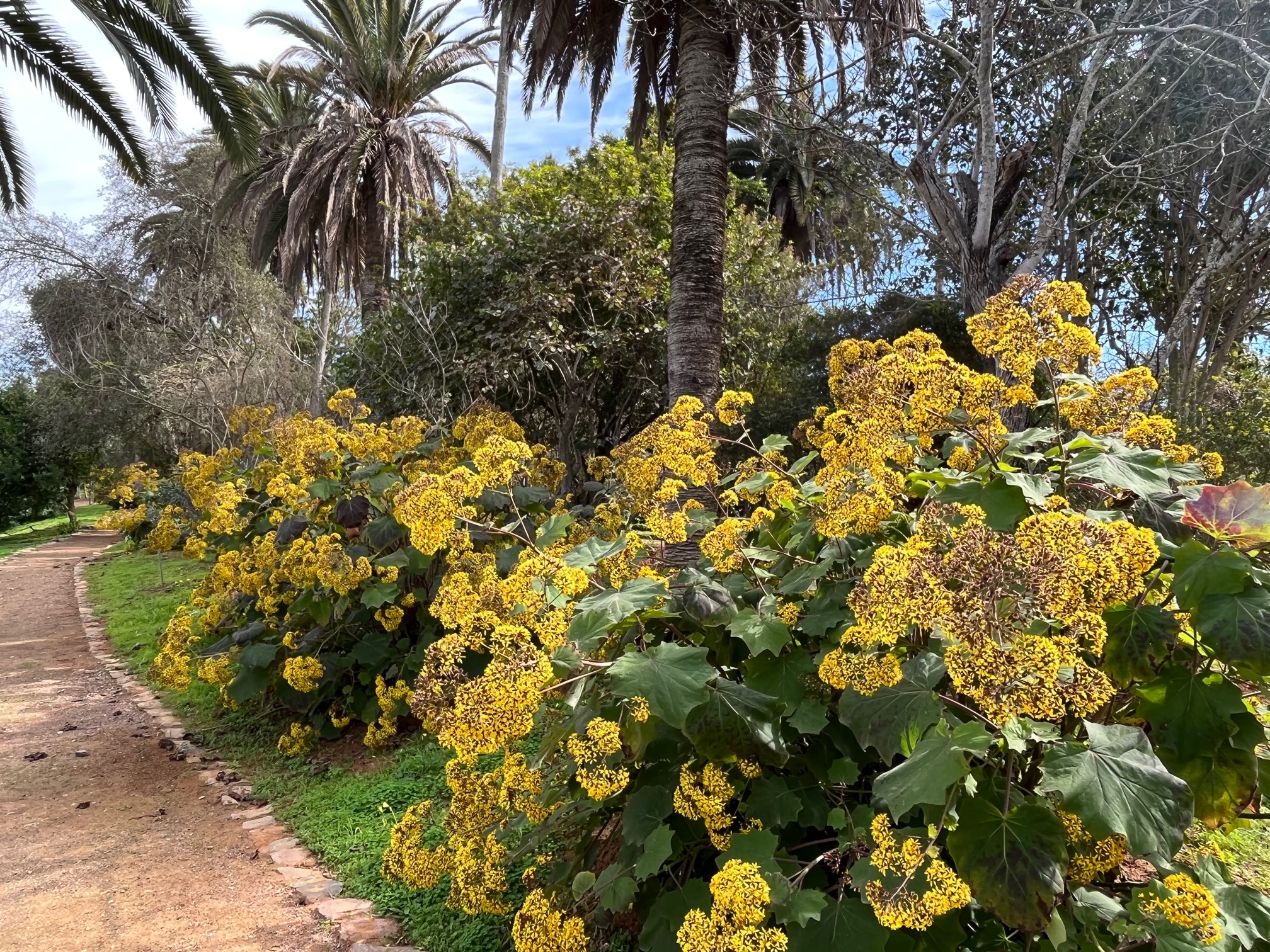
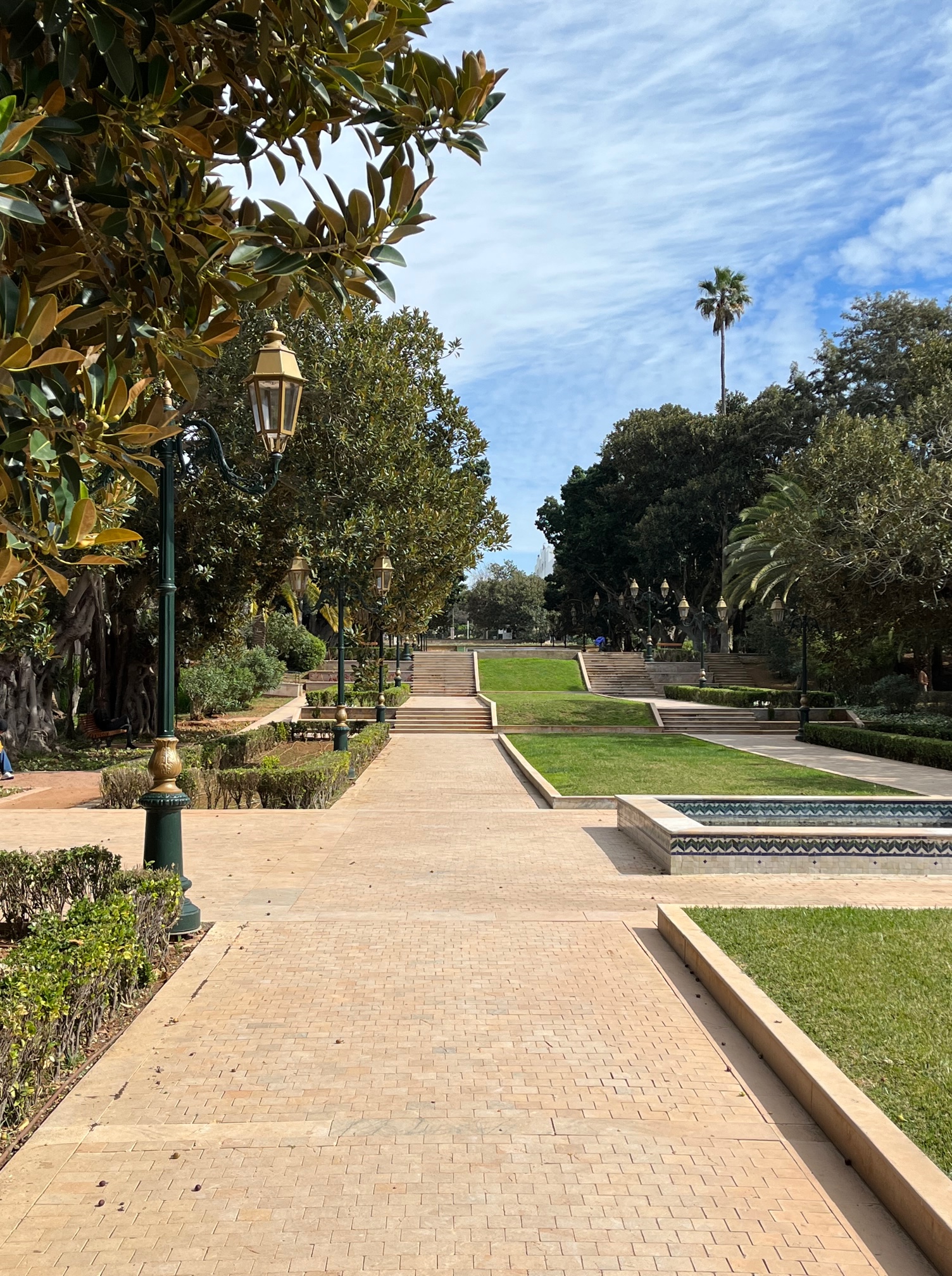
Jardin Botanique d’Essais – the perfect place to take an afternoon nap after lunch!

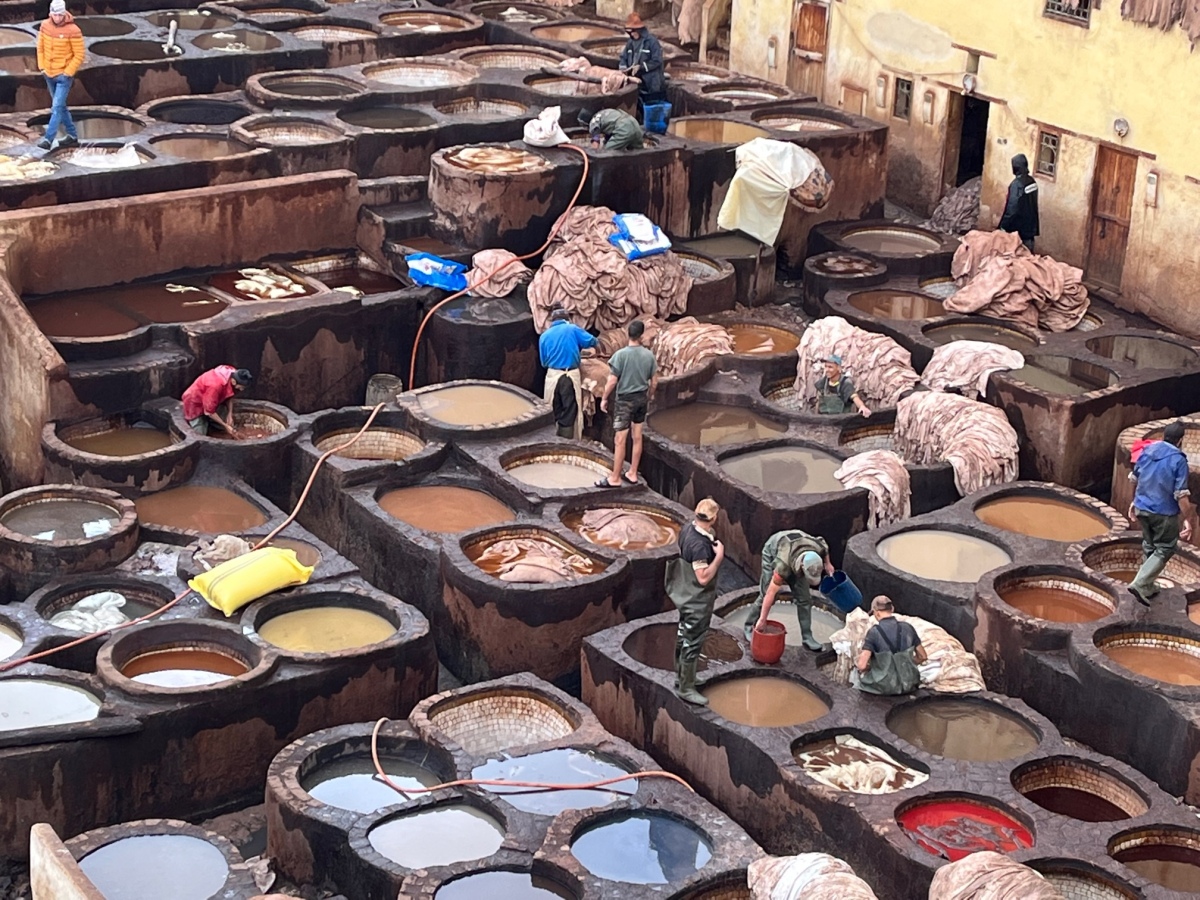
Gorgeous! Thank you for the photos and info! Are you guys enjoying yourselves?
LikeLiked by 1 person
Hi Tracie, We are enjoying our travels. Seems like we are constantly on the move which takes a little getting used to.
LikeLike